Meta Description: Dive into our Quick Miso Ramen with Veggies recipe for a warm and satisfying vegan bowl, ready in under 30 minutes! Perfect for a nourishing and delicious plant-based meal.
Introduction
In the realm of comforting vegan dishes, Quick Miso Ramen with Veggies stands out as a delightful and nourishing option. Combining the rich umami flavors of miso broth with a vibrant assortment of vegetables and hearty noodles, this ramen bowl is both satisfying and incredibly easy to prepare. Whether you’re seeking a warming meal on a chilly evening, a quick lunch to fuel your day, or a wholesome dinner to share with loved ones, this vegan ramen is your go-to solution.
This recipe showcases how traditional Japanese flavors can be adapted into a plant-based masterpiece without compromising on taste or nutrition. The versatility of miso, combined with the freshness of seasonal vegetables, creates a harmonious balance that pleases both vegans and non-vegans alike. In this comprehensive guide, we’ll explore the benefits of this dish, provide a detailed recipe, and share tips and variations to customize it to your liking. Let’s embark on creating a warm and satisfying vegan ramen bowl that’s as nutritious as it is delicious!
Why Choose Quick Miso Ramen with Veggies?
The Quick Miso Ramen with Veggies is more than just a meal—it’s a celebration of plant-based comfort food that brings together simplicity, nutrition, and incredible flavor. Here’s why this dish deserves a spot in your weekly meal rotation:
Nutritional Powerhouse
- Miso Paste: Fermented and packed with probiotics, miso paste supports gut health and adds a deep, savory flavor to the broth. It’s also rich in essential minerals like zinc, manganese, and copper.
- Whole Wheat or Soba Noodles: These noodles provide complex carbohydrates and fiber, ensuring sustained energy and aiding in digestion.
- Vegetables: A colorful mix of vegetables such as bok choy, carrots, mushrooms, and spinach adds a spectrum of vitamins, minerals, and antioxidants, enhancing the meal’s nutritional profile and visual appeal.
- Tofu: An excellent source of plant-based protein, tofu supports muscle maintenance and repair. It’s also rich in calcium and iron, essential for bone health and energy levels.
- Healthy Fats: Ingredients like sesame oil introduce heart-healthy fats that promote satiety and support overall well-being.
Quick and Easy
With a preparation and cooking time of under 30 minutes, this ramen is perfect for those busy days when time is of the essence. The straightforward cooking process ensures that even novice cooks can achieve delicious results effortlessly, making it an ideal choice for a quick yet nutritious meal.
Versatile and Customizable
One of the greatest advantages of this recipe is its adaptability. You can easily tweak the ingredients and seasoning to suit your taste preferences or dietary needs. Whether you prefer a spicier broth, want to add more vegetables, or need to incorporate different protein sources, this ramen can be tailored to meet your individual requirements.
Economical and Accessible
The ingredients used in this dish are not only nutritious but also budget-friendly and widely available. Miso paste, noodles, and a variety of vegetables are common staples in most grocery stores, ensuring that you can prepare this meal without breaking the bank or embarking on a special shopping trip.
Ingredients
Creating a delicious Quick Miso Ramen with Veggies requires a harmonious blend of fresh ingredients and flavorful seasonings. Here’s what you’ll need:
Ramen Broth
- 4 cups vegetable broth (low-sodium preferred)
- 3 tablespoons miso paste (white or yellow for a milder flavor, red for a stronger taste)
- 2 tablespoons soy sauce or tamari (for gluten-free)
- 1 tablespoon rice vinegar
- 1 tablespoon maple syrup or agave nectar
- 2 teaspoons sesame oil
- 1-inch piece ginger, grated
- 3 cloves garlic, minced
Noodles and Toppings
- 8 oz whole wheat or soba noodles
- 1 block (14 oz) firm tofu, pressed and cubed
- 2 tablespoons cornstarch
- 2 tablespoons vegetable oil
- 2 cups bok choy, chopped
- 1 cup carrots, julienned
- 1 cup mushrooms (shiitake or button), sliced
- 2 cups spinach leaves
- 1/4 cup green onions, sliced
- 1 tablespoon sesame seeds
- Optional: Sriracha or chili oil for added heat
Ingredient Breakdown
- Vegetable Broth: Forms the base of the rich and savory miso ramen, infusing it with depth and flavor.
- Miso Paste: Adds umami and complexity to the broth while providing probiotics for gut health.
- Soy Sauce and Rice Vinegar: Enhance the broth’s flavor with salty and tangy notes, respectively.
- Maple Syrup or Agave Nectar: Introduce a subtle sweetness that balances the savory elements of the broth.
- Sesame Oil: Offers a nutty aroma and flavor, elevating the overall taste profile.
- Ginger and Garlic: Provide a fragrant and aromatic foundation, enhancing the broth’s depth.
- Noodles: Serve as the hearty carbohydrate component, providing a satisfying texture that absorbs the flavorful broth.
- Tofu: Adds a protein-packed element, making the ramen more filling and nutritious.
- Cornstarch and Vegetable Oil: Help in achieving crispy tofu cubes, adding a delightful contrast to the tender vegetables and soft noodles.
- Bok Choy, Carrots, Mushrooms, Spinach: Bring a variety of textures and nutrients, making the ramen colorful and vibrant.
- Green Onions and Sesame Seeds: Act as fresh garnishes that add a burst of flavor and a touch of elegance.
- Sriracha or Chili Oil (Optional): For those who enjoy a spicy kick, these additions can elevate the heat level of the ramen.
Instructions
Preparing the Quick Miso Ramen with Veggies is straightforward and requires minimal preparation. Follow these step-by-step instructions to create a warm and satisfying vegan ramen bowl in under 30 minutes.
Step 1: Press and Cube the Tofu
Properly pressing tofu is crucial for achieving a crispy texture.
- Press the Tofu: Remove the tofu from its packaging and drain the excess liquid. Wrap the tofu block in a clean kitchen towel or paper towels and place it between two plates. Set a heavy object (like a cast-iron skillet) on top and let it press for at least 10 minutes. This process removes excess moisture, allowing the tofu to absorb more flavors and achieve a crispy exterior when cooked.
- Cube the Tofu: After pressing, cut the tofu into bite-sized cubes, approximately 1-inch in size.
Step 2: Coat and Cook the Tofu
- Prepare the Coating: In a shallow dish, place the cornstarch. Lightly toss the tofu cubes in the cornstarch, ensuring each piece is evenly coated. This step helps in creating a crispy outer layer when frying.
- Heat the Oil: In a large skillet, heat the vegetable oil over medium-high heat.
- Fry the Tofu: Once the oil is hot and shimmering, add the coated tofu cubes in a single layer. Avoid overcrowding the pan to ensure even cooking. Fry the tofu for about 3-4 minutes on each side or until golden brown and crispy. Use tongs or a spatula to turn the tofu gently.
- Remove and Set Aside: Once crispy, remove the tofu from the skillet and set it aside on a plate lined with paper towels to absorb any excess oil.
Step 3: Prepare the Broth
- Combine Broth and Seasonings: In a medium saucepan, combine the vegetable broth, miso paste, soy sauce or tamari, rice vinegar, maple syrup or agave nectar, and sesame oil.
- Add Aromatics: Stir in the grated ginger and minced garlic, ensuring the miso paste is fully dissolved.
- Simmer: Bring the mixture to a gentle simmer over medium heat. Allow it to simmer for about 5 minutes to let the flavors meld together. Taste and adjust seasoning as needed, adding more soy sauce or miso paste for depth.
Step 4: Cook the Noodles
- Boil Water: In a large pot, bring water to a rolling boil. Add a generous pinch of salt to the boiling water to season the noodles.
- Cook Noodles: Add the whole wheat or soba noodles to the boiling water and cook according to the package instructions until al dente, usually about 4-6 minutes.
- Drain and Rinse: Once cooked, drain the noodles and rinse them under cold water to stop the cooking process and prevent them from becoming mushy.
Step 5: Sauté the Vegetables
- Heat the Broth: Ensure the miso broth is still warm and ready to be combined with the noodles and vegetables.
- Add Vegetables: To the simmering broth, add the chopped bok choy, julienned carrots, and sliced mushrooms. Cook for about 3-4 minutes until the vegetables are tender but still retain some crunch.
- Add Spinach: Stir in the fresh spinach leaves and cook for an additional minute until they wilt slightly.
Step 6: Assemble the Ramen Bowls
- Divide Noodles: Divide the cooked noodles evenly among four large bowls.
- Add Broth and Vegetables: Ladle the hot miso broth with vegetables over the noodles in each bowl.
- Top with Tofu: Arrange the crispy tofu cubes on top of the ramen in each bowl.
- Garnish: Sprinkle sliced green onions and sesame seeds over each serving. For those who enjoy a spicy kick, add a drizzle of sriracha or chili oil.
Step 7: Serve and Enjoy
- Final Touches: Optionally, squeeze a bit of fresh lime juice over the ramen for an extra burst of freshness.
- Serve Immediately: Enjoy your Quick Miso Ramen with Veggies while it’s warm and flavorful.
Tips and Variations
While the Quick Miso Ramen with Veggies is delicious as is, here are some tips and variations to customize the dish according to your preferences:
1. Add More Protein
For an extra protein boost, consider adding:
- Edamame: Toss in shelled edamame for additional protein and a pop of color.
- Seitan: Add slices of seitan for a chewy texture and extra protein.
- Vegan Meat Alternatives: Incorporate your favorite vegan meat substitutes for a heartier meal.
2. Incorporate Seasonal Vegetables
Switch up the vegetables based on what’s in season to keep the ramen fresh and exciting:
- Baby Corn: Adds a sweet crunch to the bowl.
- Snap Peas: Provide a crisp texture and fresh flavor.
- Zucchini: Slice thinly and add for a tender bite.
3. Experiment with Broth Flavors
Change the flavor profile by trying different broths:
- Coconut Miso Broth: Add coconut milk for a creamy, tropical twist.
- Spicy Miso Broth: Increase the amount of sriracha or add red pepper flakes for a spicier kick.
- Herb-Infused Broth: Incorporate fresh herbs like cilantro or basil for added freshness.
4. Use Different Noodles
While soba and whole wheat noodles are excellent choices, feel free to experiment with other types:
- Rice Noodles: For a gluten-free option with a lighter texture.
- Udon Noodles: Provide a chewy, satisfying bite.
- Glass Noodles: Add a unique, translucent appearance to the ramen.
5. Make it a One-Pot Meal
To further simplify cleanup, consider cooking the noodles directly in the broth. Adjust the cooking time accordingly to ensure the noodles are perfectly cooked without becoming mushy.
6. Enhance with Superfoods
Boost the nutritional value by adding superfoods:
- Chia Seeds: Sprinkle chia seeds for added omega-3 fatty acids.
- Hemp Seeds: Add hemp seeds for a complete protein boost.
- Goji Berries: Incorporate goji berries for antioxidants and a sweet flavor.
7. Vegan Cheese Options
For those who enjoy a cheesy flavor, consider adding:
- Nutritional Yeast: Sprinkle nutritional yeast for a cheesy, umami flavor and additional B vitamins.
- Vegan Parmesan: Add a sprinkle of vegan Parmesan for added depth.
- Vegan Mozzarella: Incorporate shredded vegan mozzarella for a melty, creamy texture.
8. Customize the Toppings
Tailor the toppings to suit your taste:
- Pickled Ginger: Add pickled ginger for a tangy contrast.
- Fresh Lime Wedges: Serve with lime wedges for an extra burst of citrus.
- Microgreens: Garnish with microgreens for a delicate, fresh finish.
9. Storage and Reheating
This dish stores well, making it perfect for meal prep:
- Refrigeration: Store the broth and toppings separately in airtight containers in the refrigerator for up to 4 days.
- Freezing: While not ideal due to the texture of the vegetables, you can freeze the broth for up to 2 months. Reheat and assemble the ramen with fresh toppings before serving.
- Reheating: Reheat the broth on the stovetop and warm the noodles and vegetables separately before combining.
10. Boost with Nutritional Yeast
For an extra cheesy, umami flavor and additional nutritional benefits:
- Nutritional Yeast: Sprinkle nutritional yeast directly into the broth while simmering to enhance the flavor and boost the B-vitamin content.
Nutritional Information
Understanding the nutritional profile of your meals helps you make informed dietary choices. Here’s the approximate nutritional breakdown for one serving of the Quick Miso Ramen with Veggies (serves 4):
Per Serving:
- Calories: 450 kcal
- Protein: 18g
- Carbohydrates: 60g
- Fiber: 12g
- Fat: 15g
- Saturated Fat: 3g
- Sugar: 7g
- Sodium: 800mg
Nutritional Highlights:
- Protein: Tofu and black beans provide a substantial amount of plant-based protein, essential for muscle repair and overall body function.
- Fiber: High fiber content aids in digestion, promotes satiety, and helps maintain healthy blood sugar levels.
- Healthy Fats: The use of sesame and olive oil introduces heart-healthy monounsaturated and polyunsaturated fats, promoting satiety and supporting brain health.
- Vitamins and Minerals: Kale and a variety of vegetables contribute a wealth of vitamins A, C, and K, as well as essential minerals like iron and potassium.
- Antioxidants: Ingredients like miso, ginger, and garlic are rich in antioxidants, which help combat inflammation and support immune health.
Adjusting Nutritional Content:
- Lowering Calories: Reduce the amount of oil used for sautéing or incorporate more vegetables to increase volume without adding many calories.
- Increasing Protein: Add extra tofu, incorporate edamame, or include a sprinkle of hemp seeds to boost the protein content.
- Reducing Sodium: Use low-sodium vegetable broth and tamari instead of regular soy sauce to control the sodium content.
Conclusion
The Quick Miso Ramen with Veggies is a shining example of how plant-based meals can be both quick and incredibly satisfying. Its rich umami broth, tender vegetables, and crispy tofu create a harmonious blend of flavors and textures that cater to both taste buds and health goals. Whether you’re a busy professional, a student, or anyone looking to incorporate more plant-based meals into your diet, this ramen offers a delicious and nutritious solution that fits seamlessly into any meal plan.
By leveraging the simplicity of miso and the versatility of fresh vegetables, this recipe showcases how minimal ingredients can come together to create a flavorful and wholesome meal. The ease of preparation ensures that you can enjoy a homemade, comforting vegan dinner without the stress of complex cooking steps or extensive cleanup.
Moreover, the adaptability of this dish allows you to experiment and personalize it according to your taste preferences and dietary needs. From adjusting the spice levels to incorporating additional vegetables or proteins, the Quick Miso Ramen with Veggies is a flexible and delightful addition to any culinary repertoire. Embrace the warm and satisfying flavors of this nutritious vegan bowl, and let it inspire you to explore the endless possibilities of plant-based cooking.
Picture Gallery
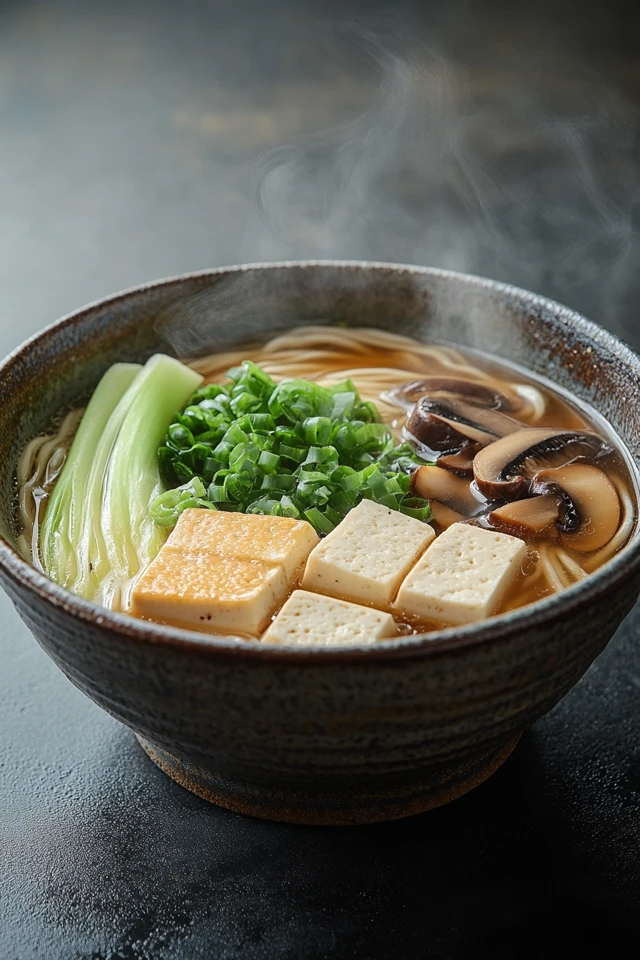
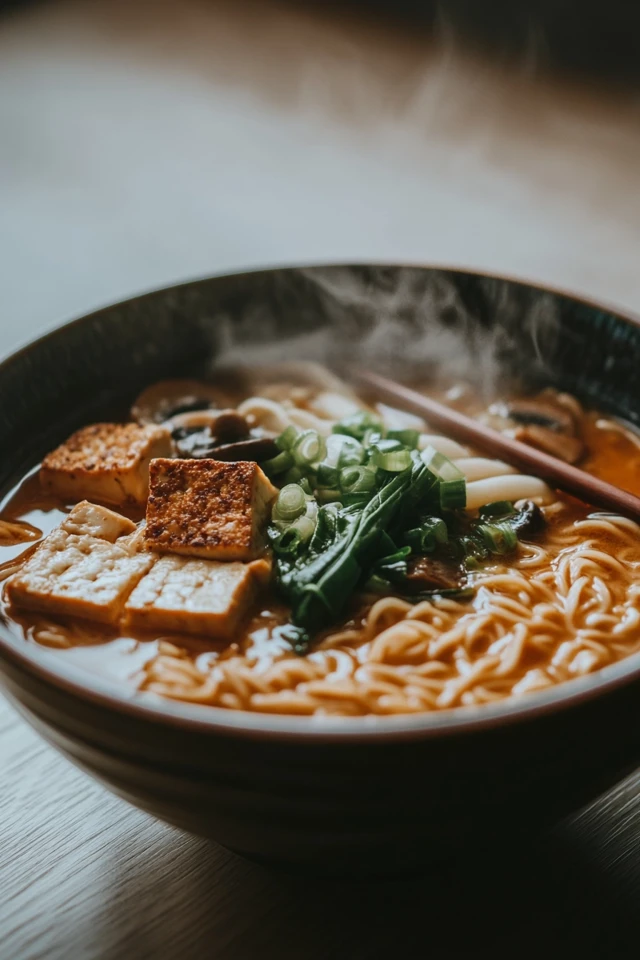
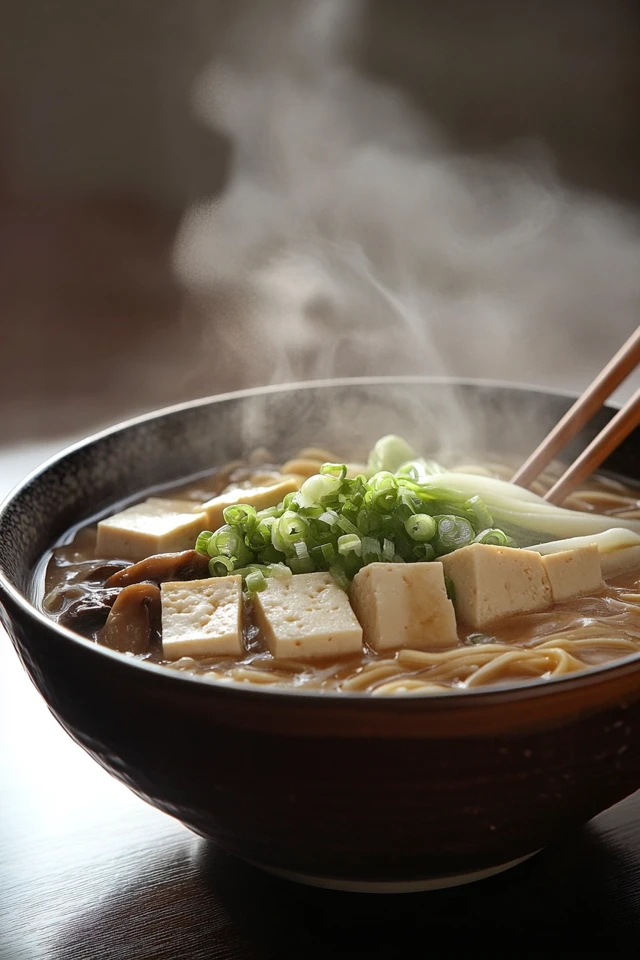
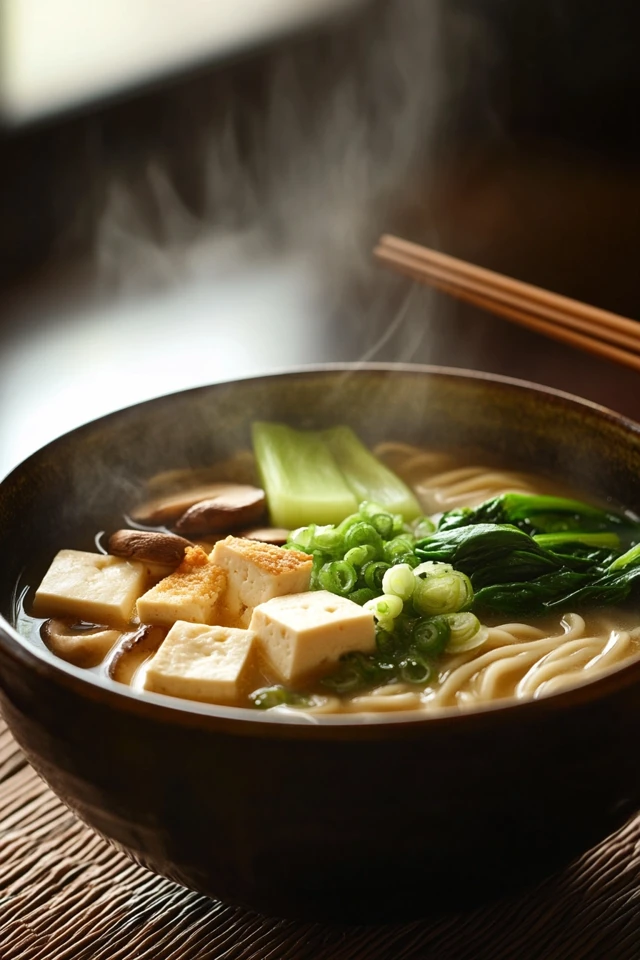
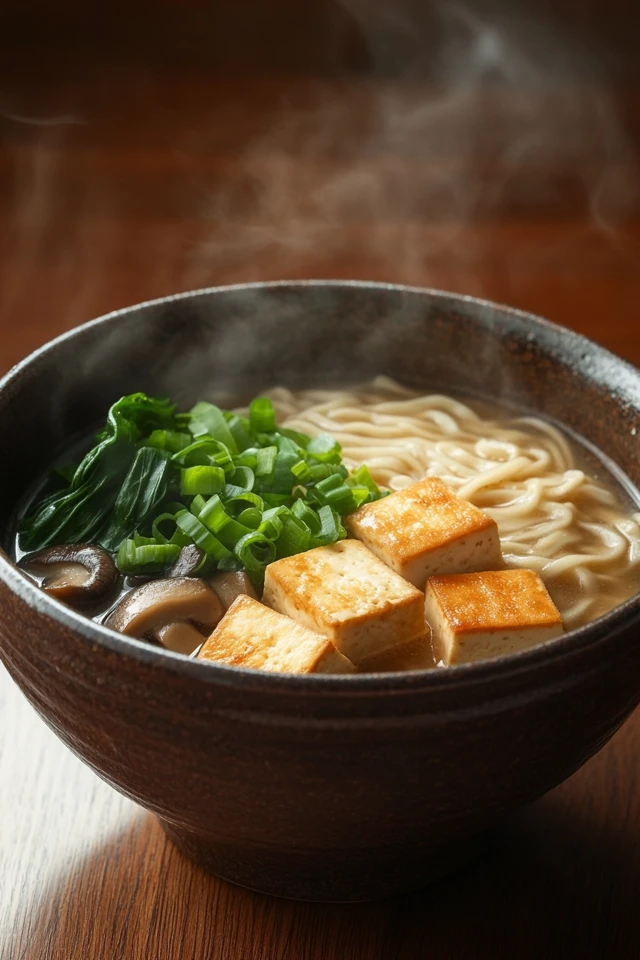
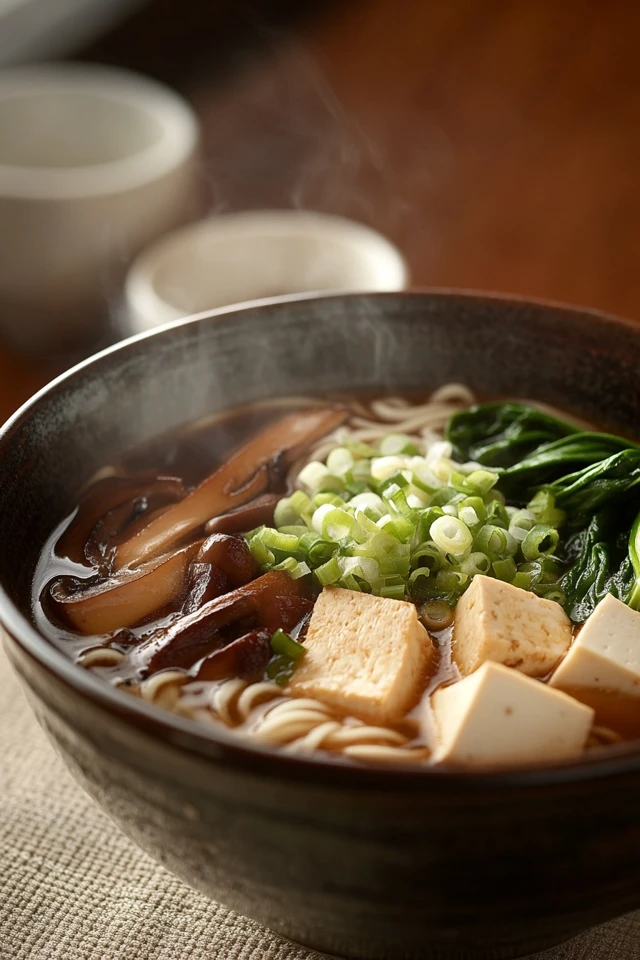
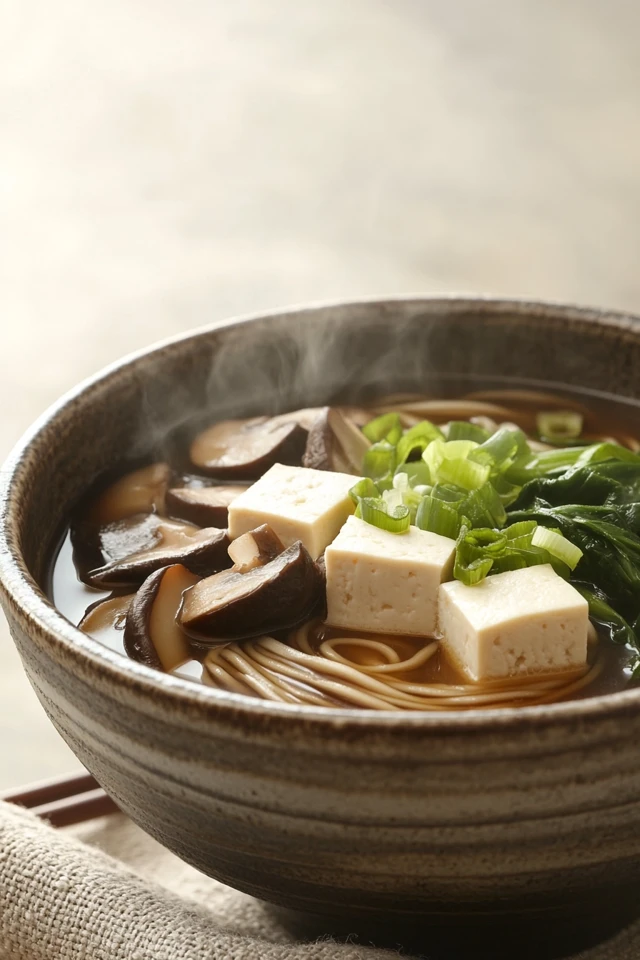
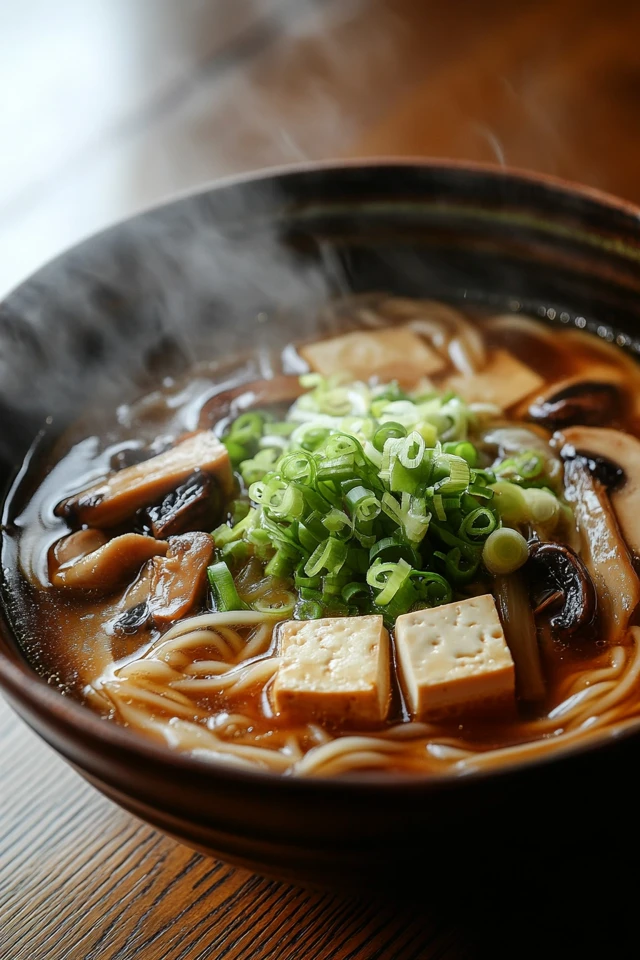

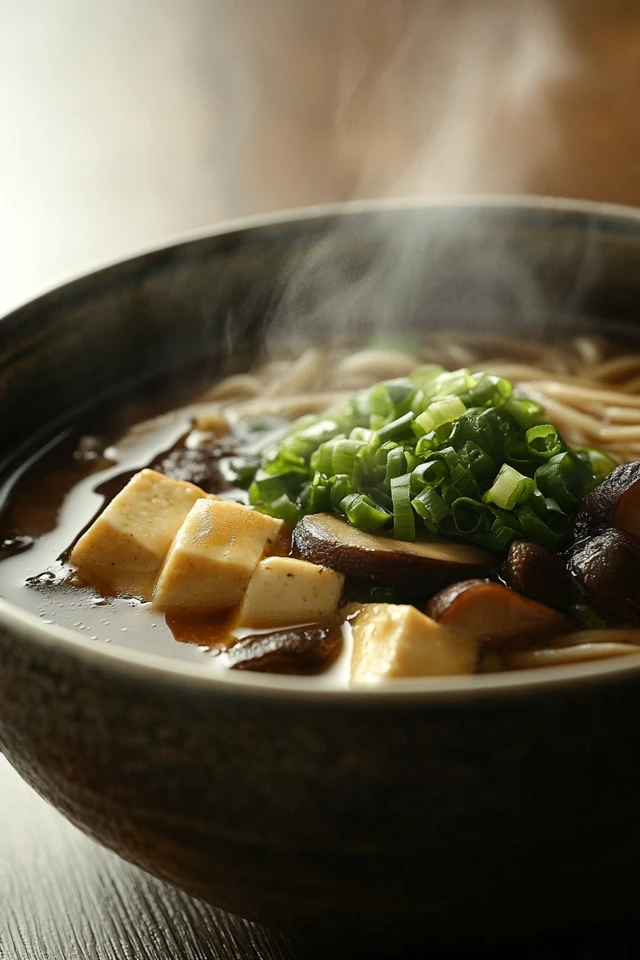
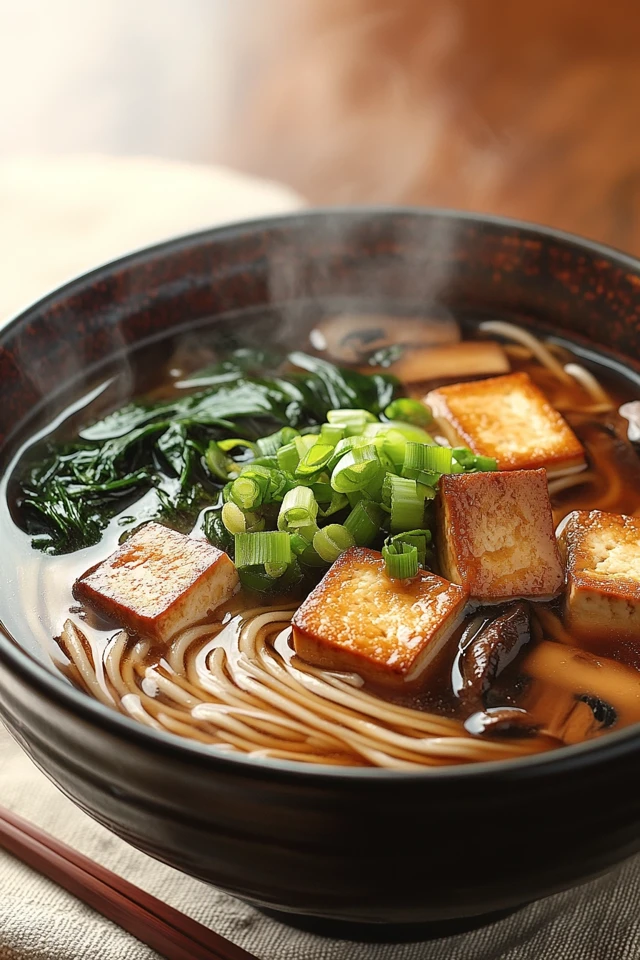
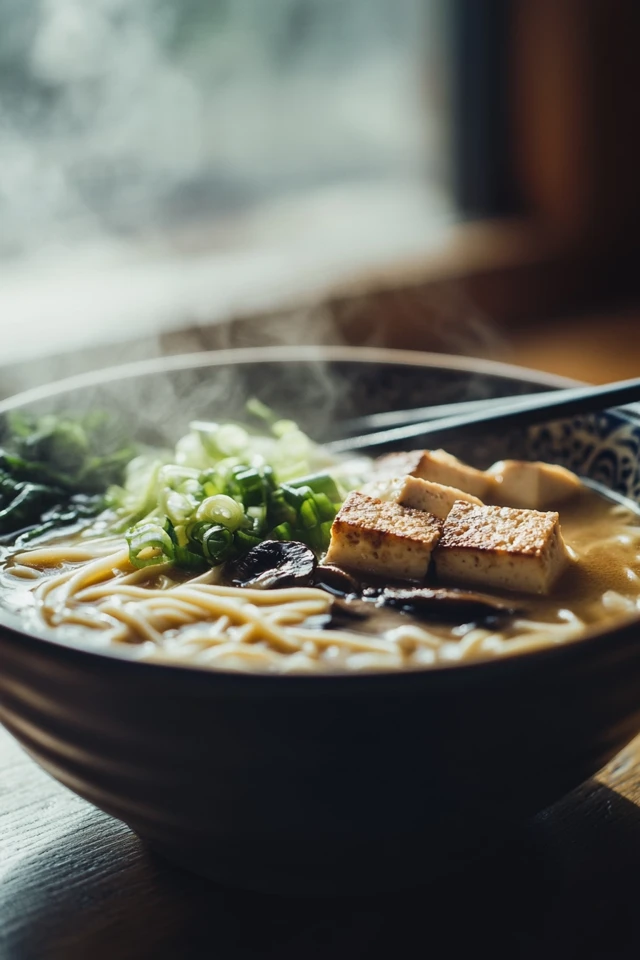
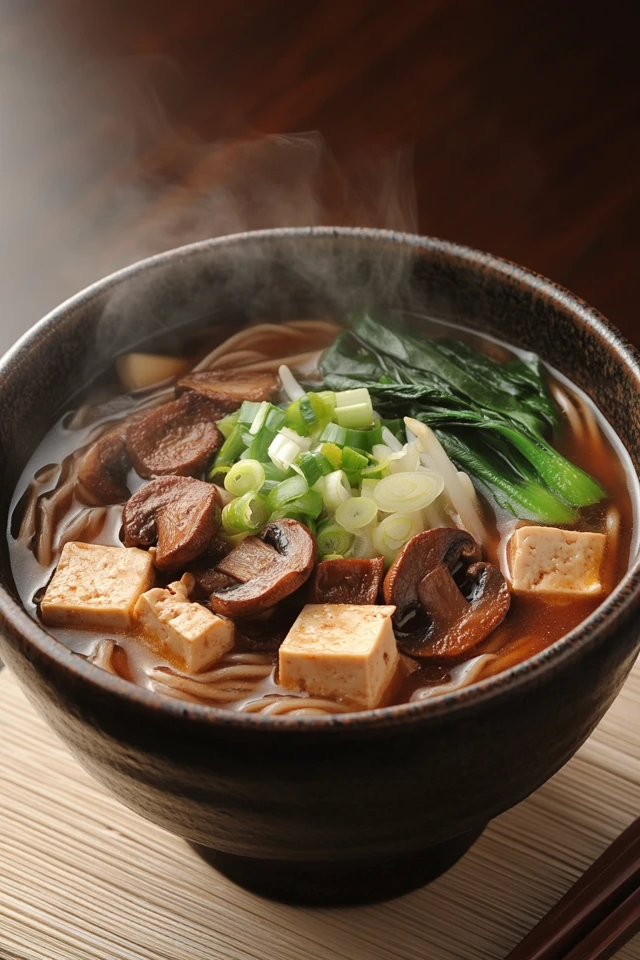

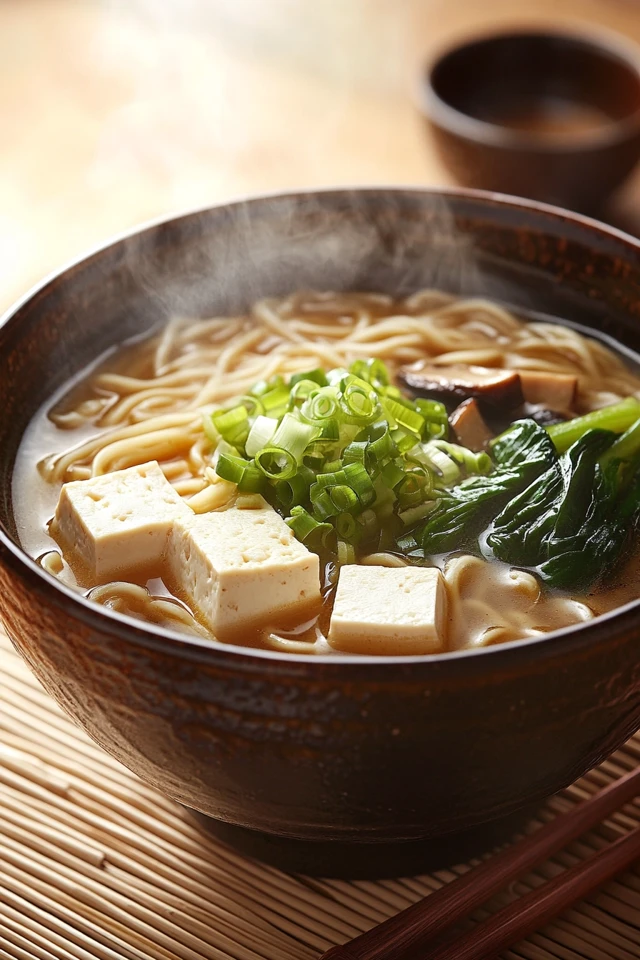

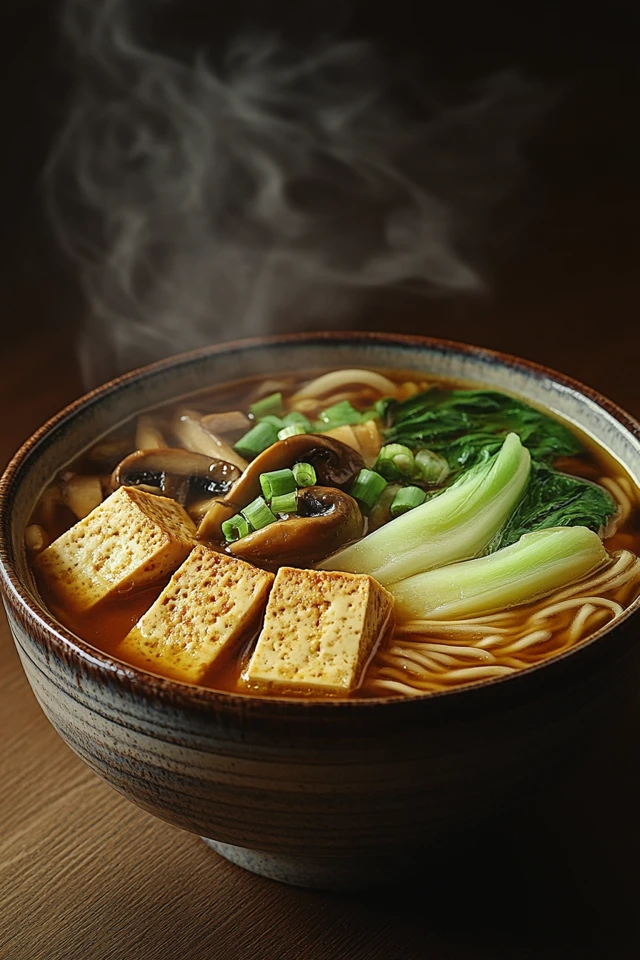
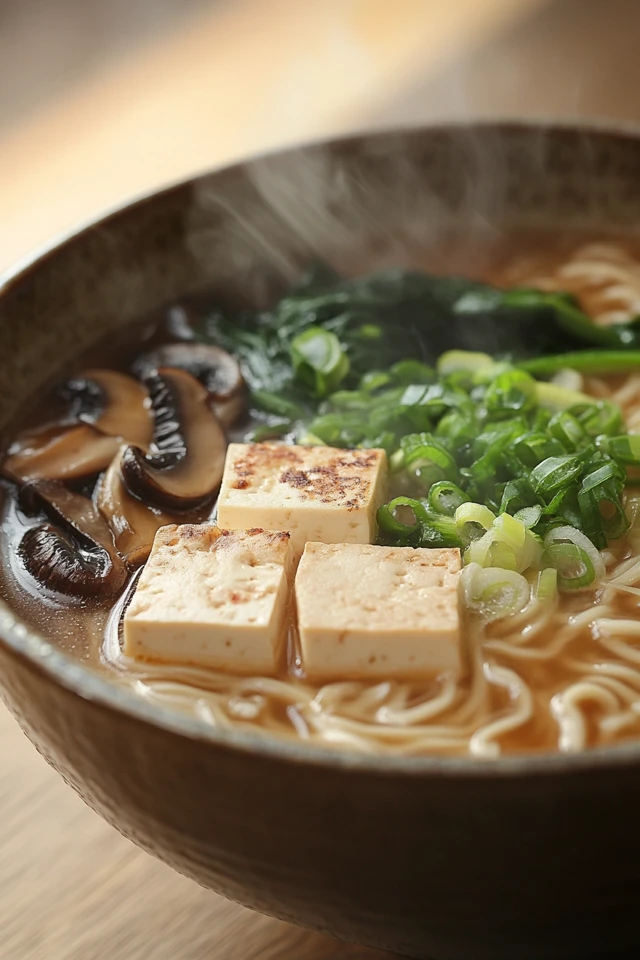
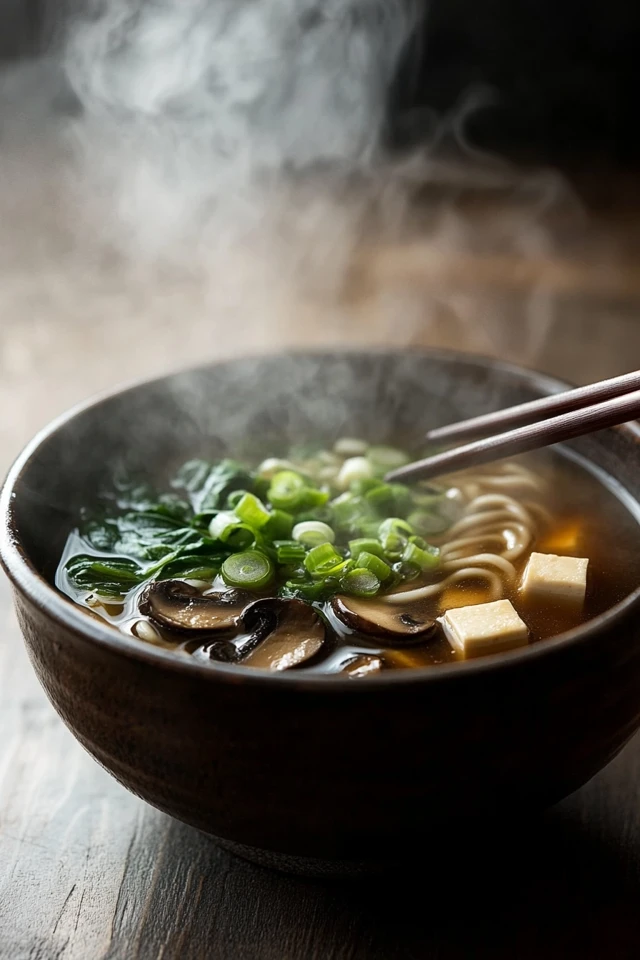
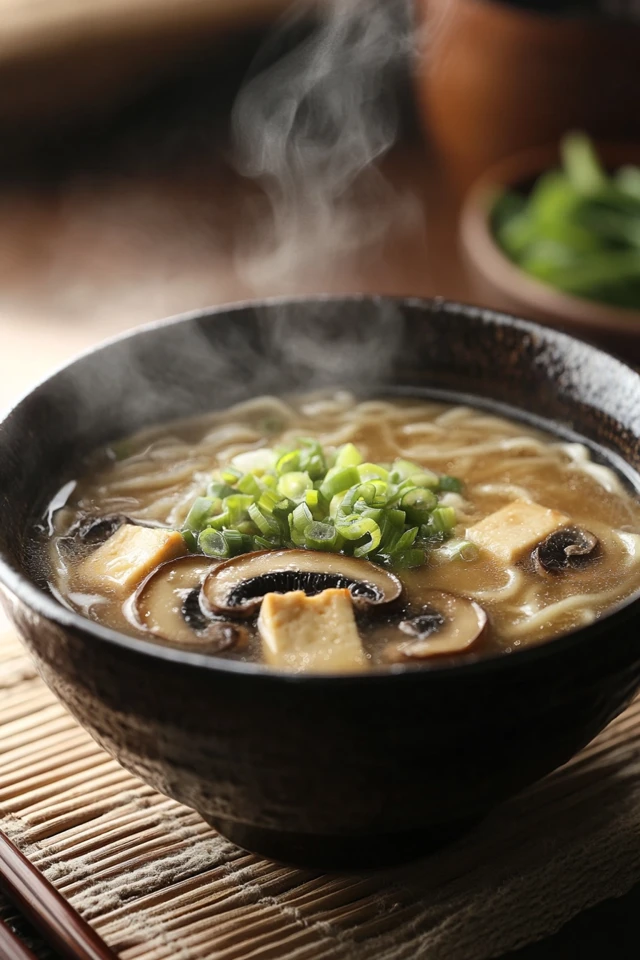
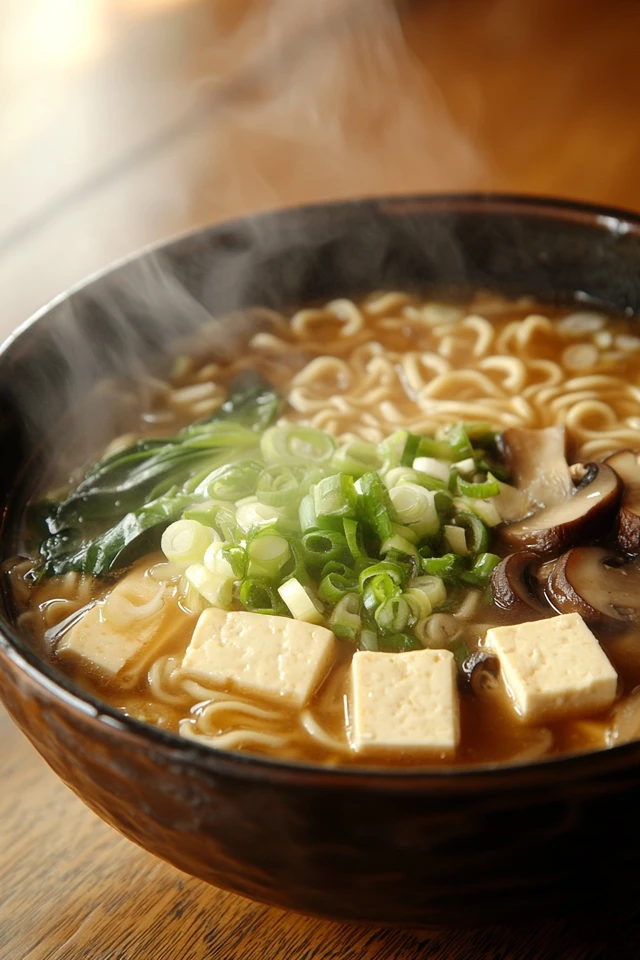
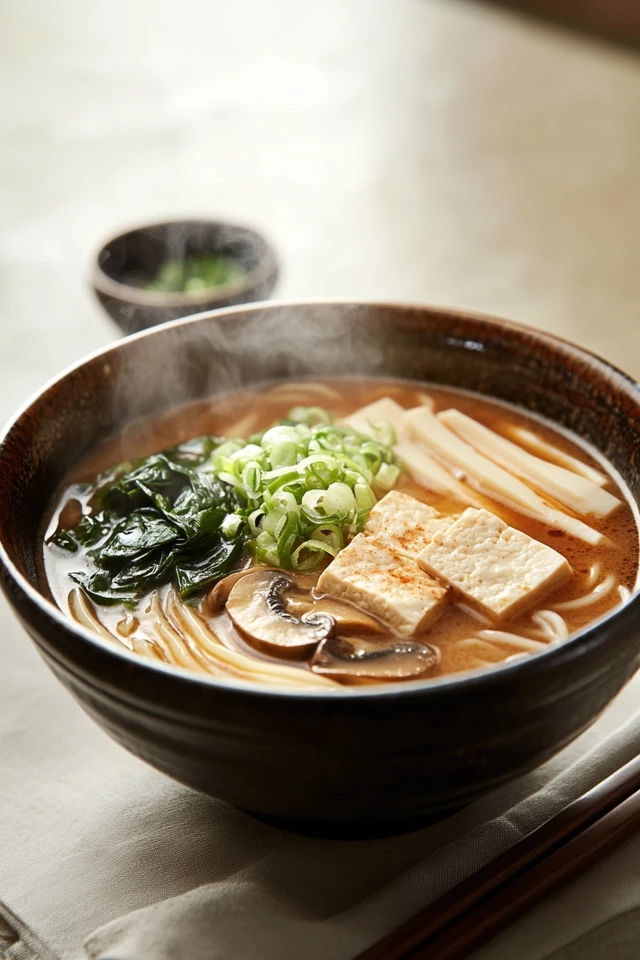
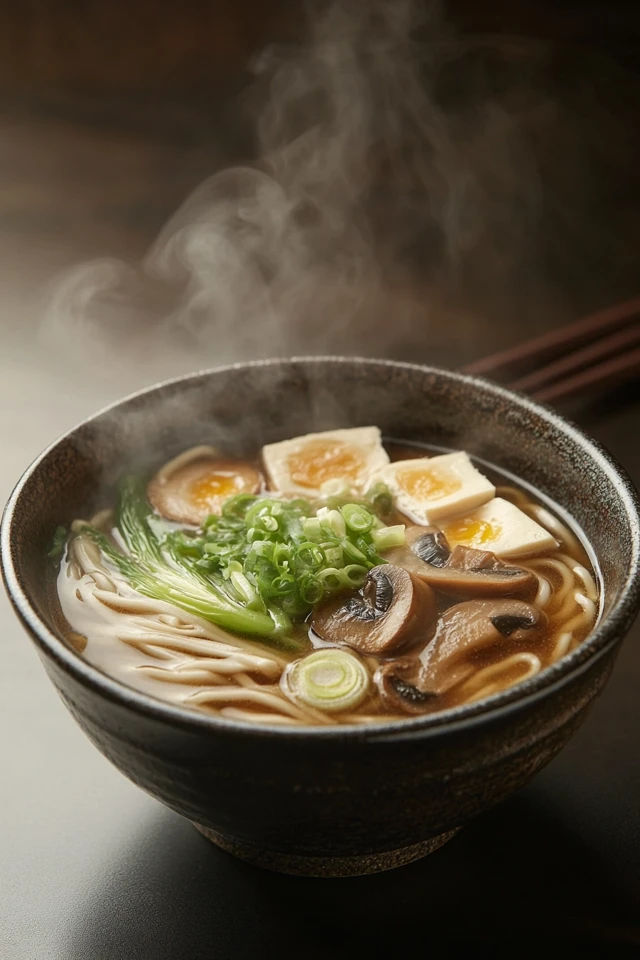
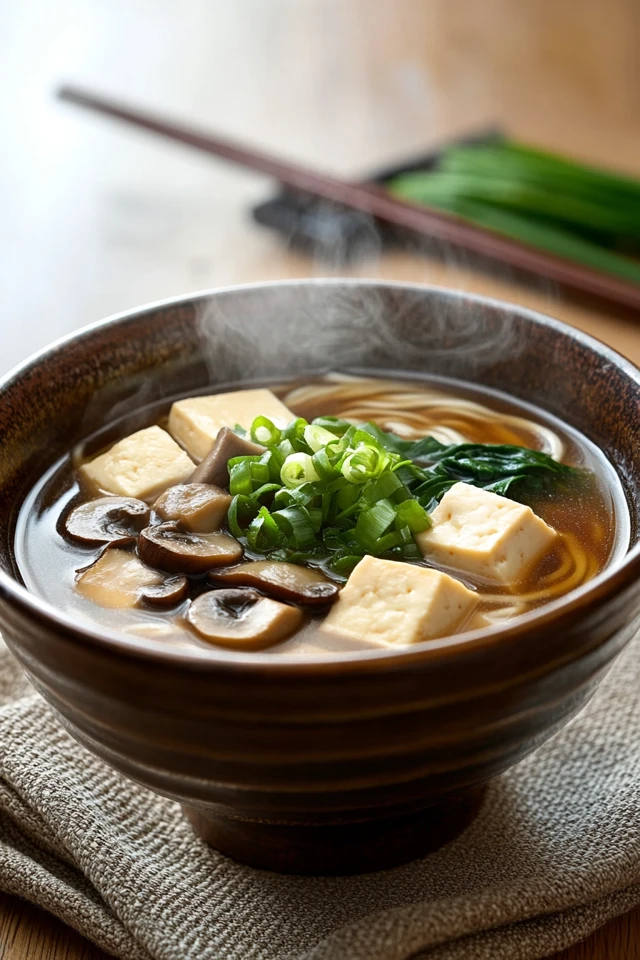
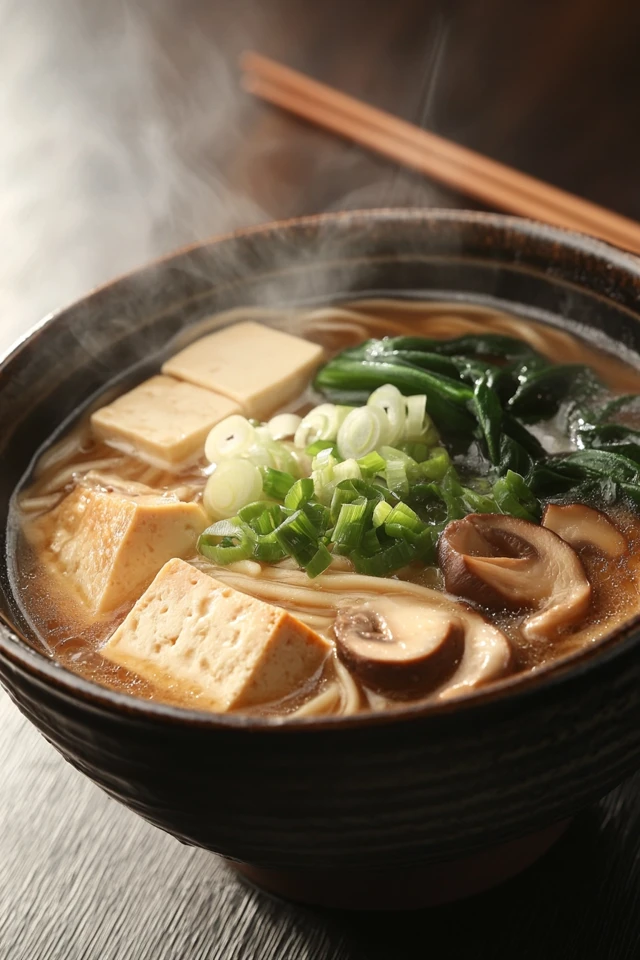
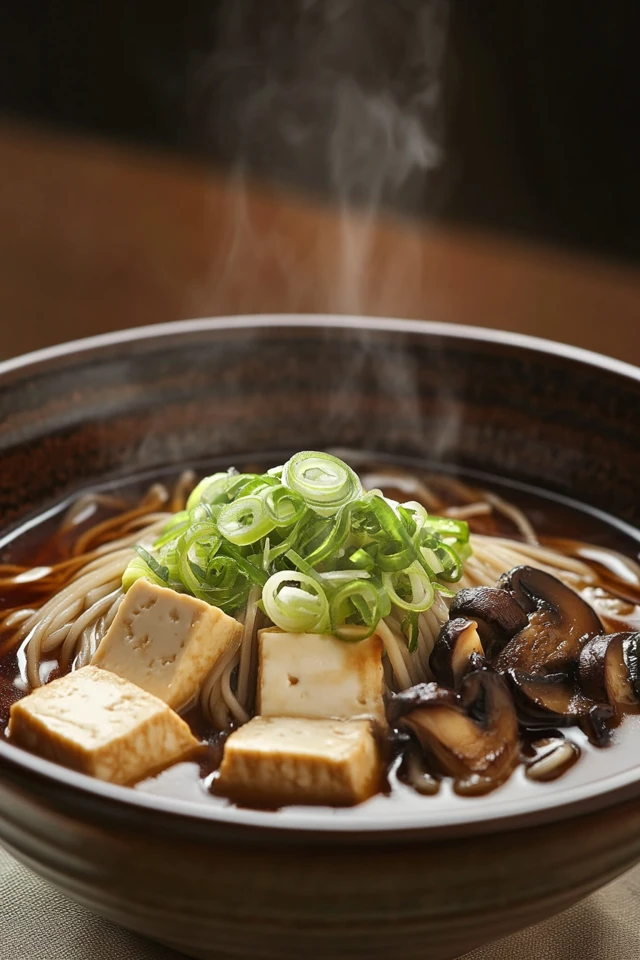
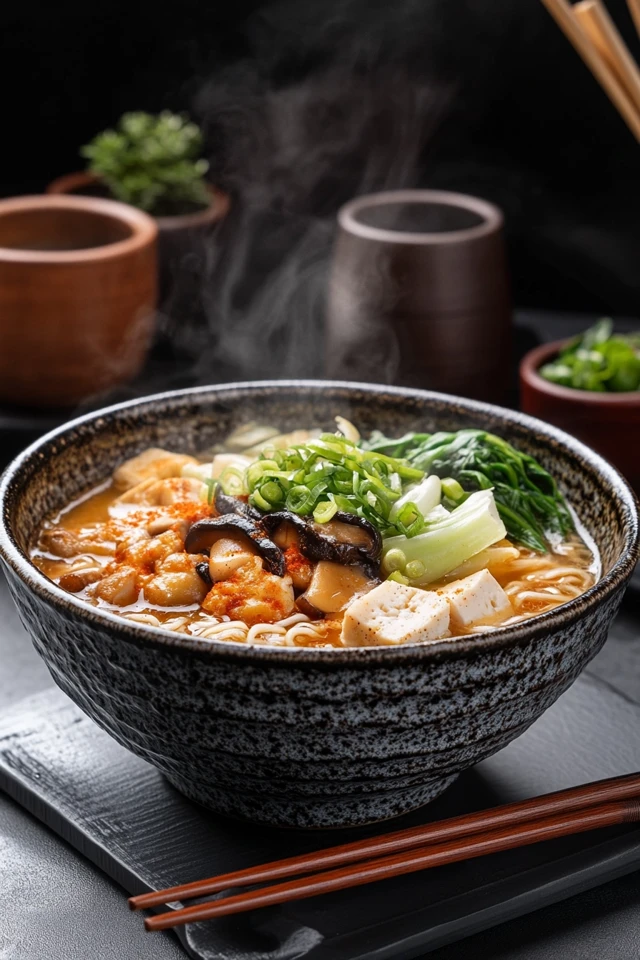
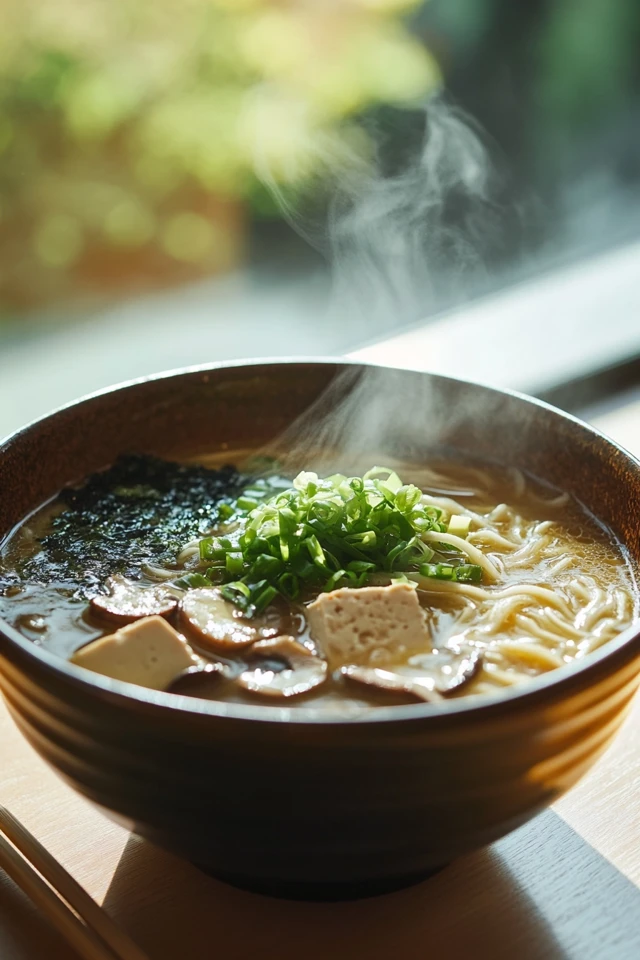
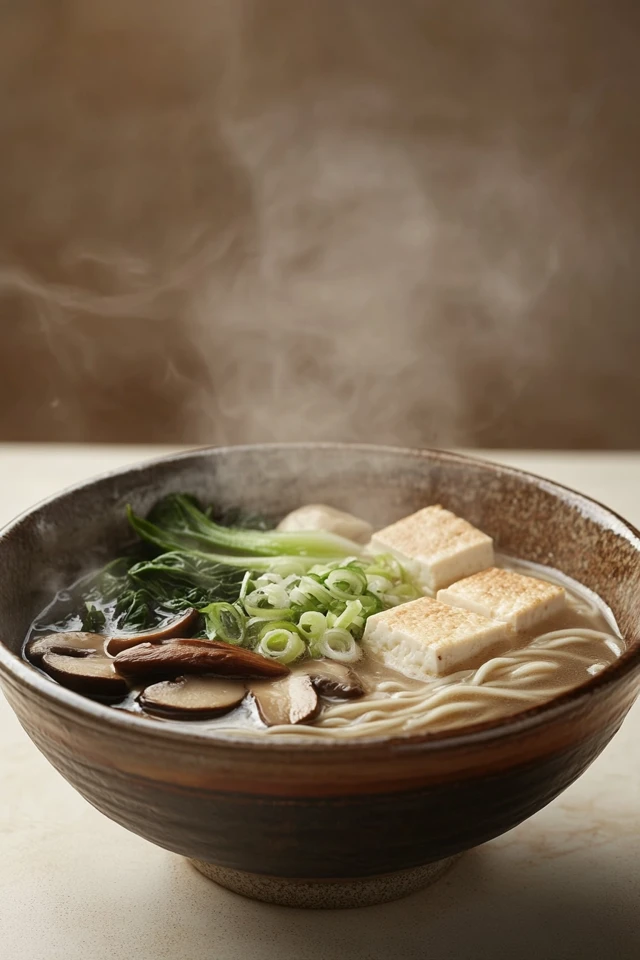
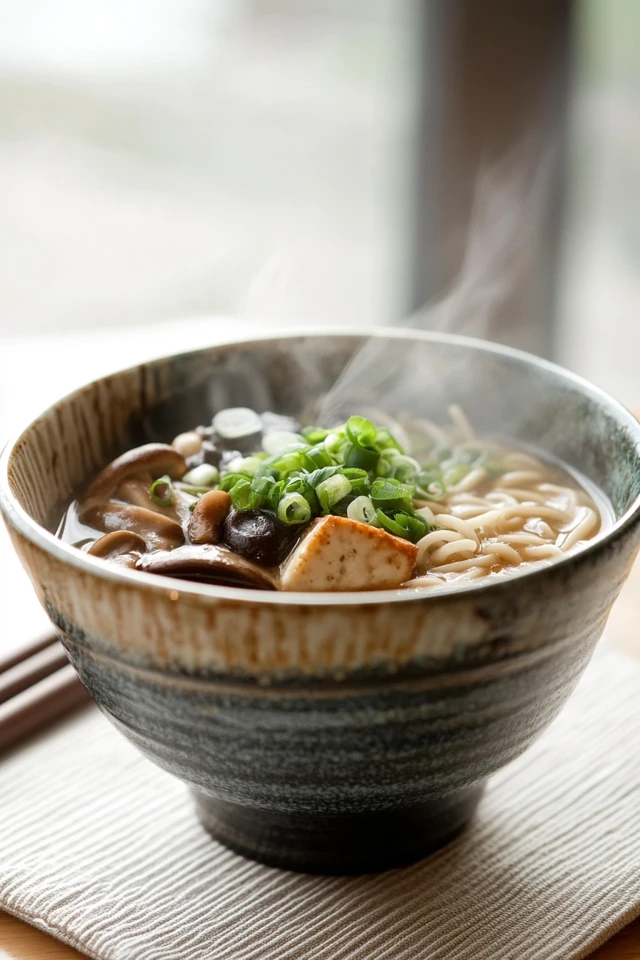
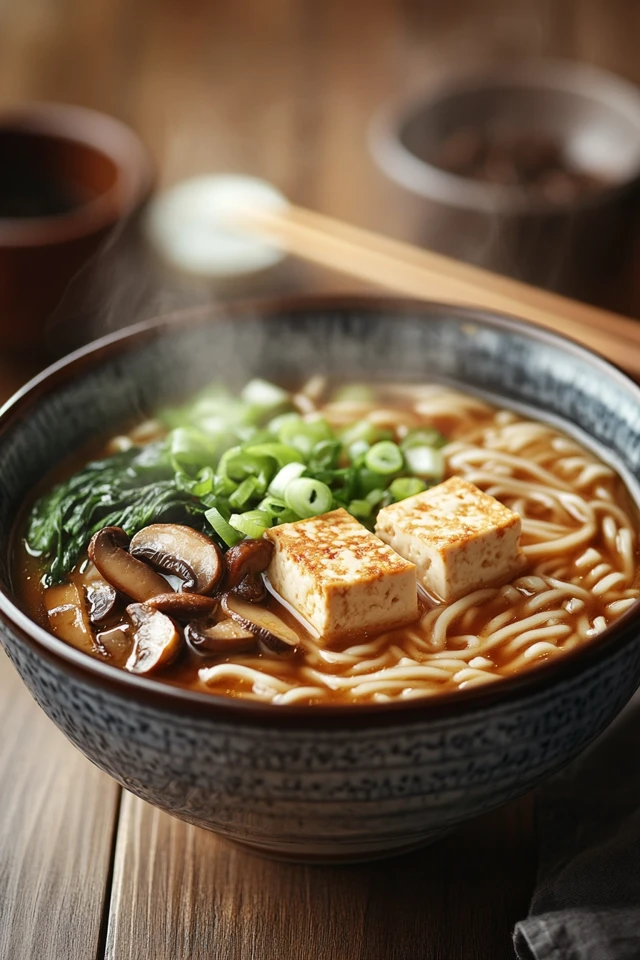
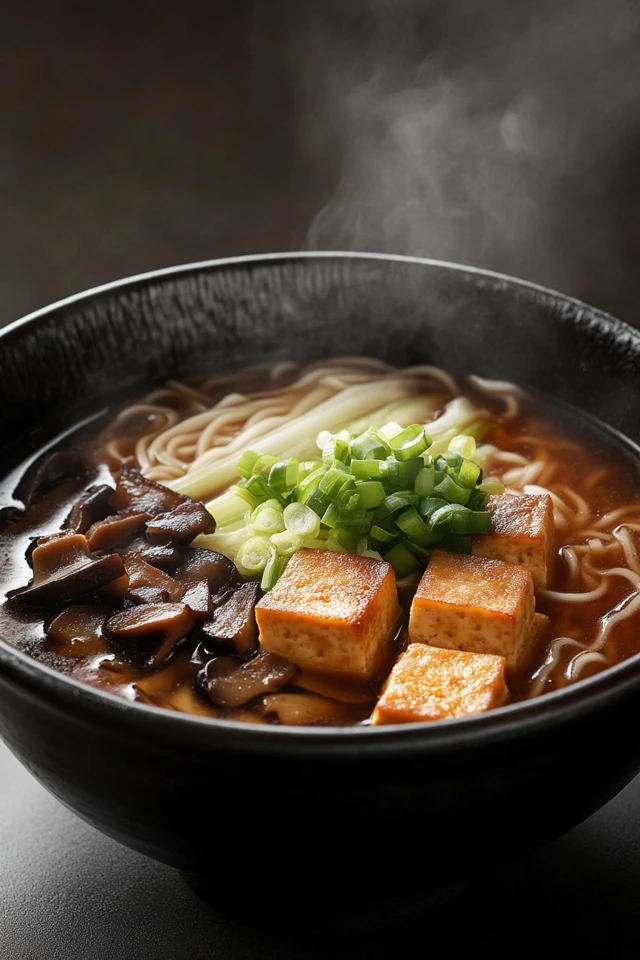
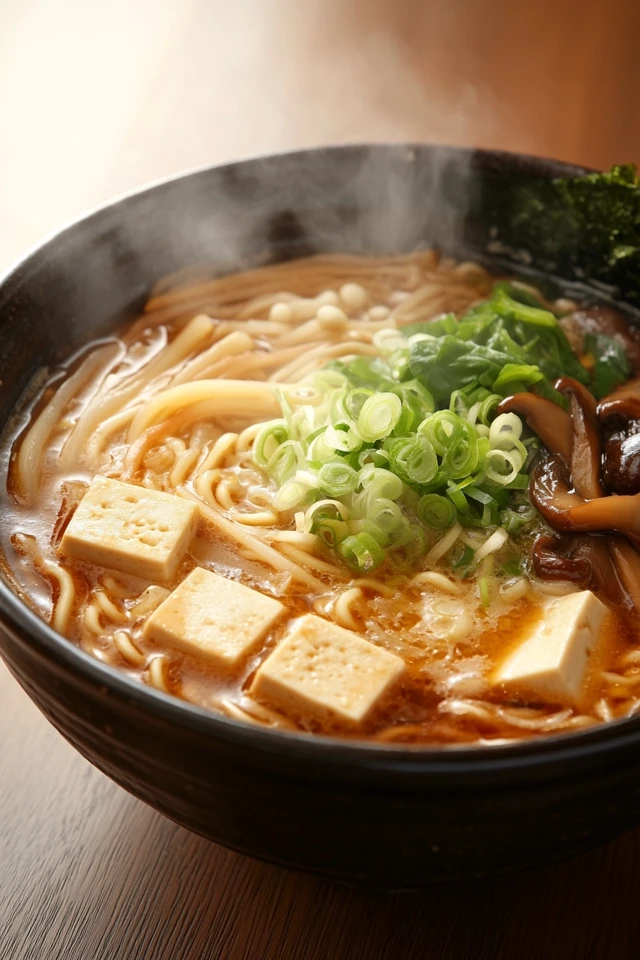
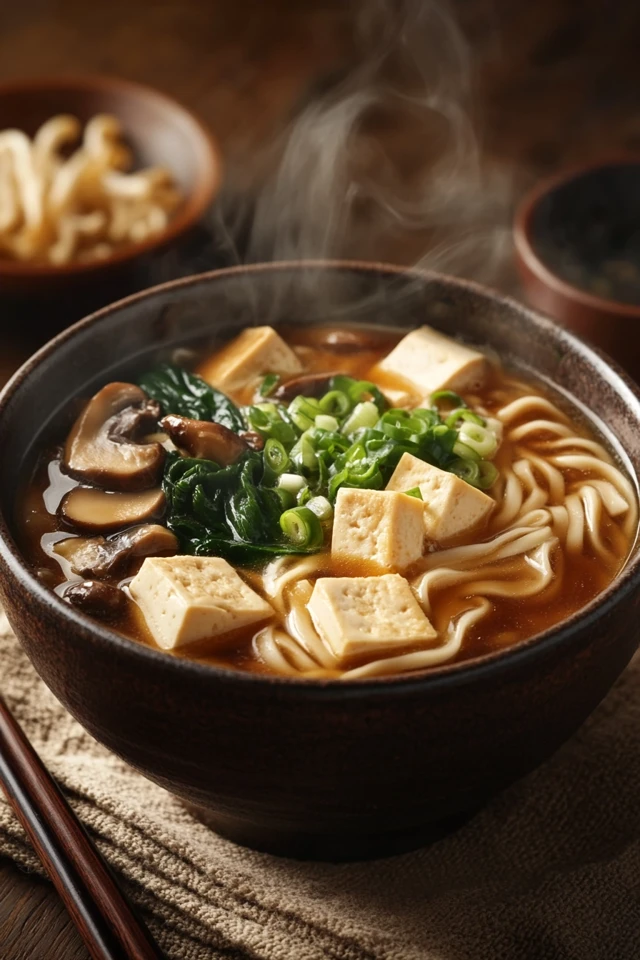
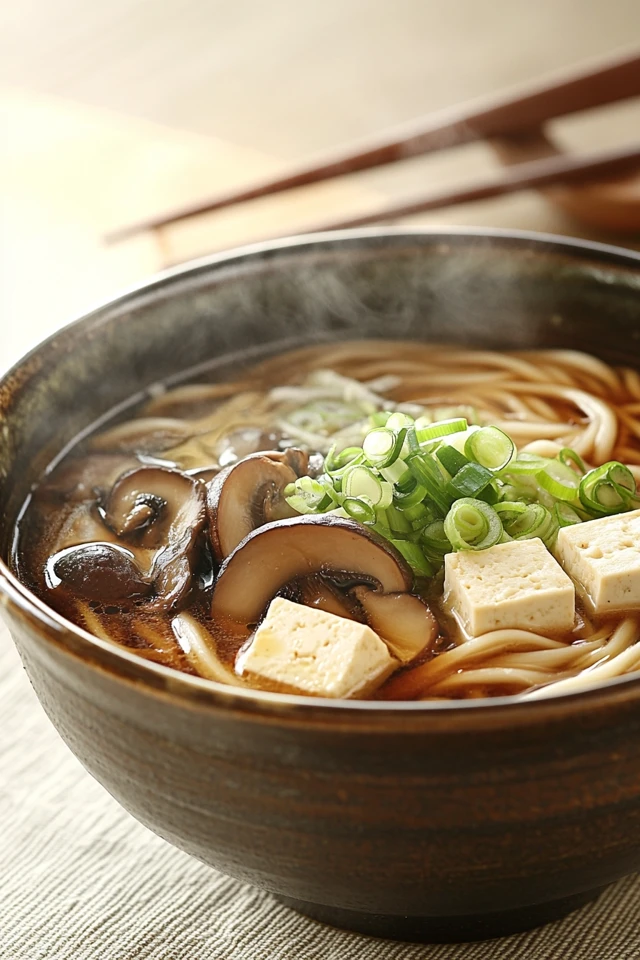
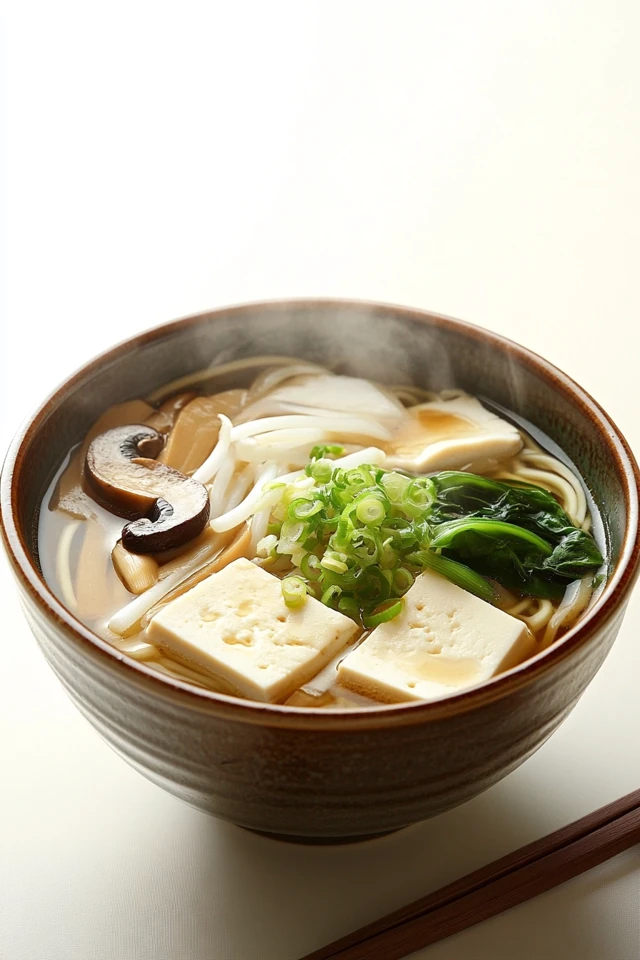
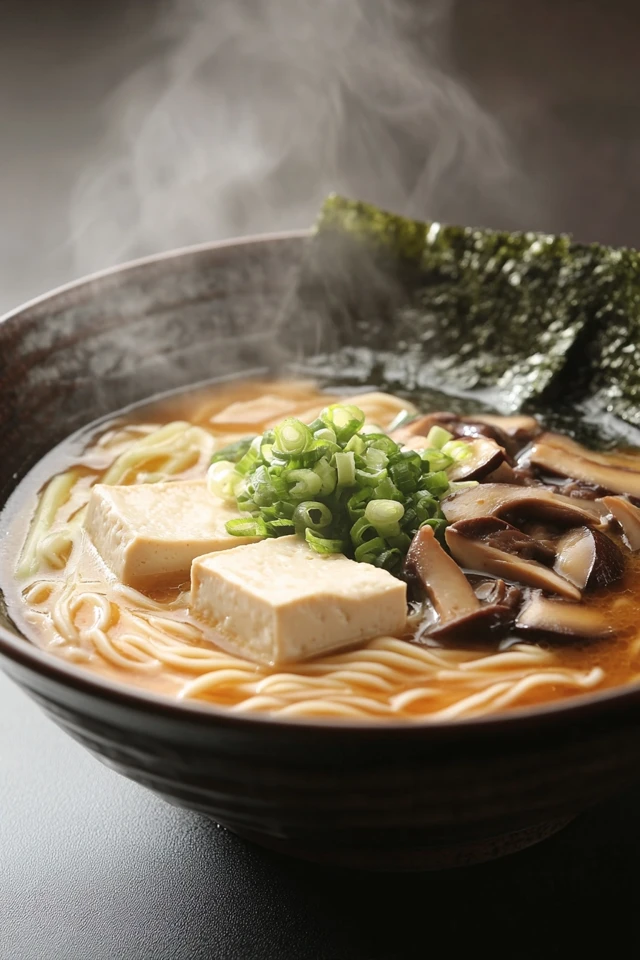
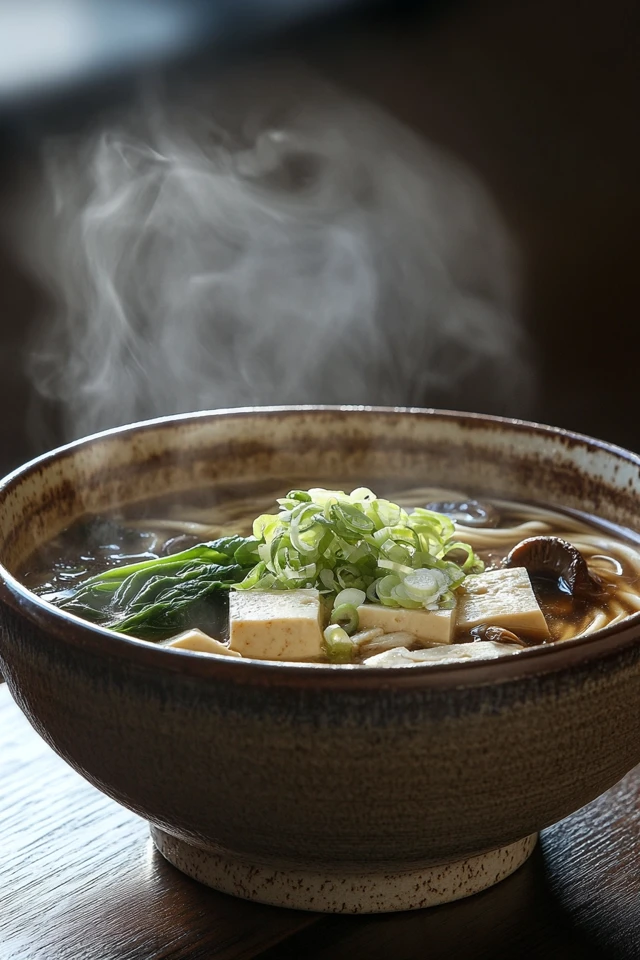
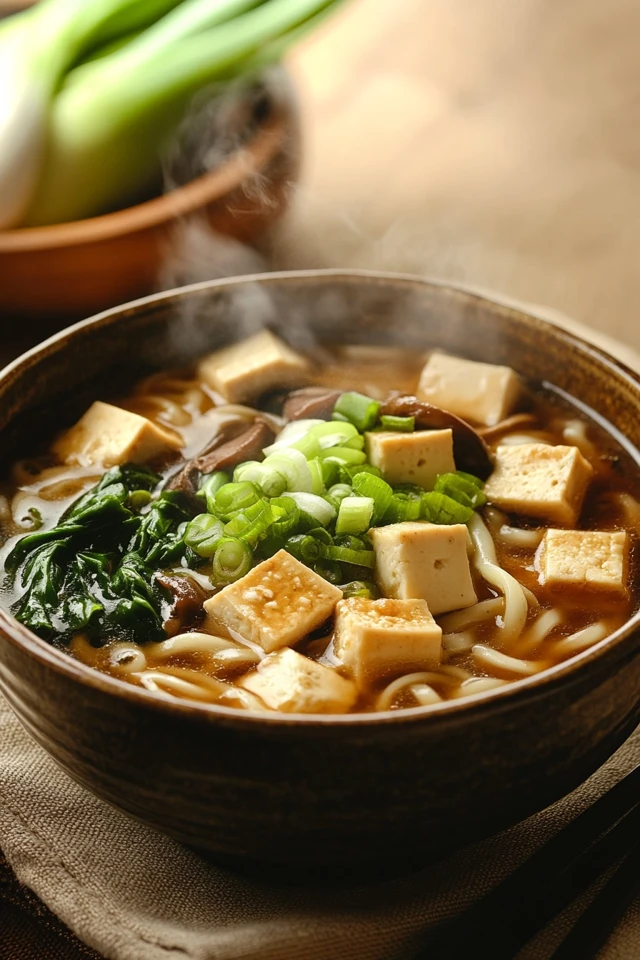
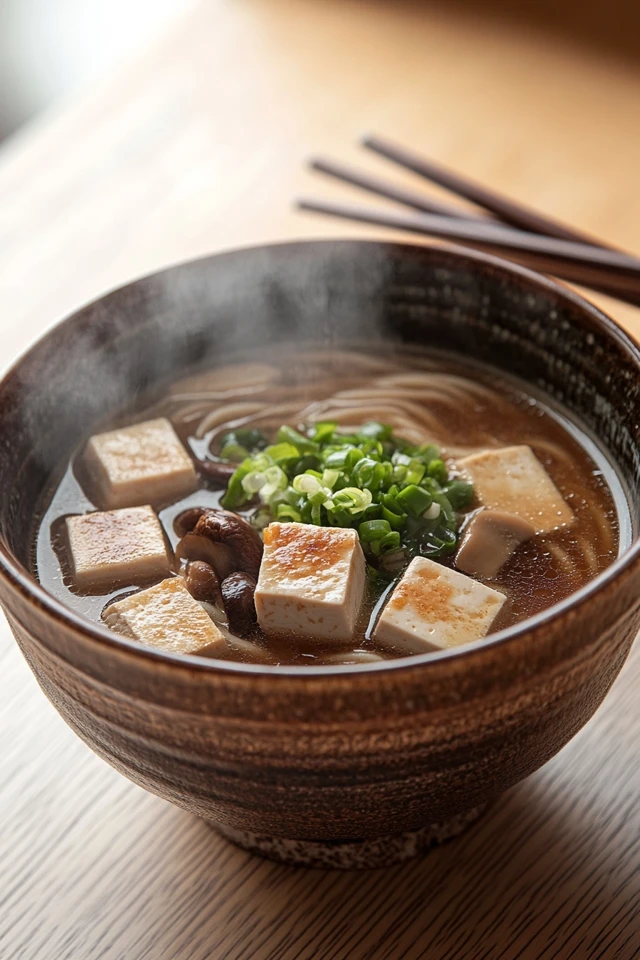
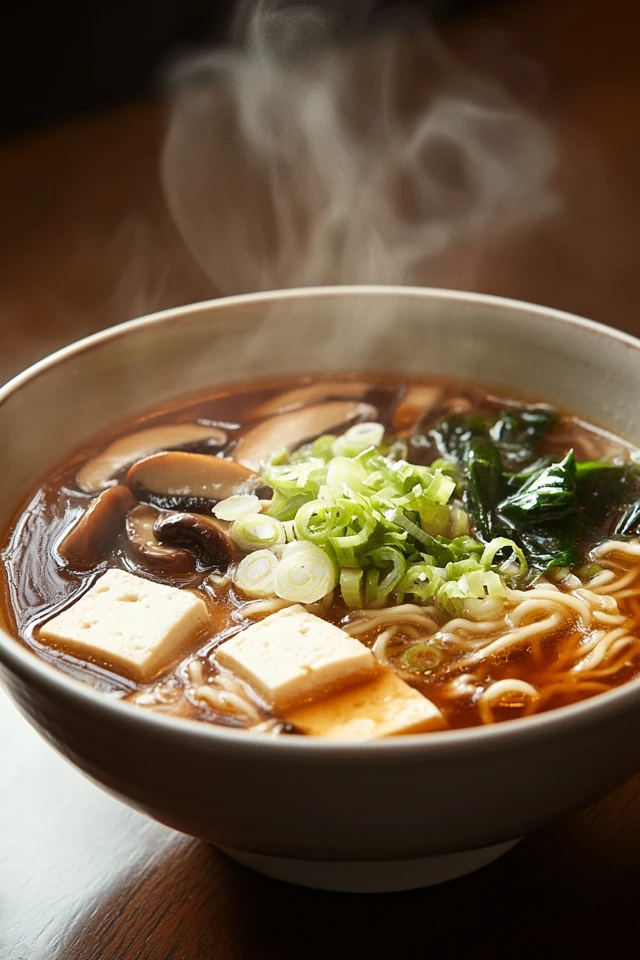
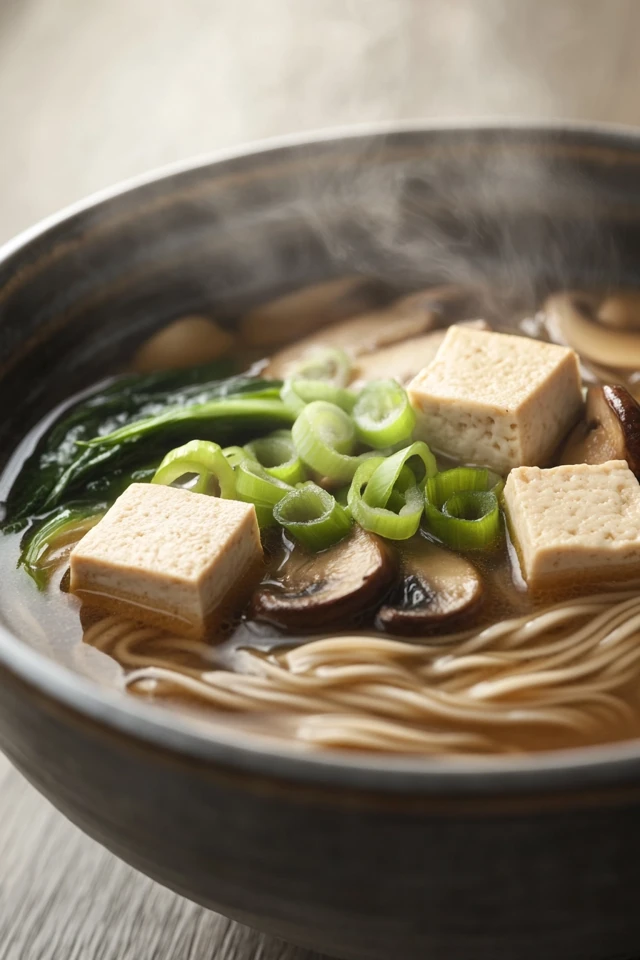
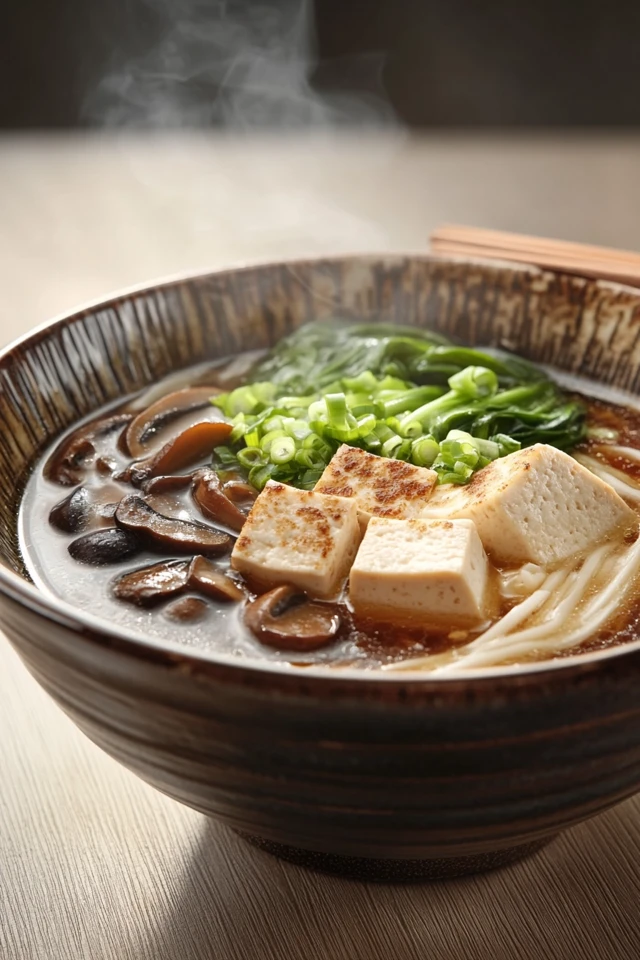
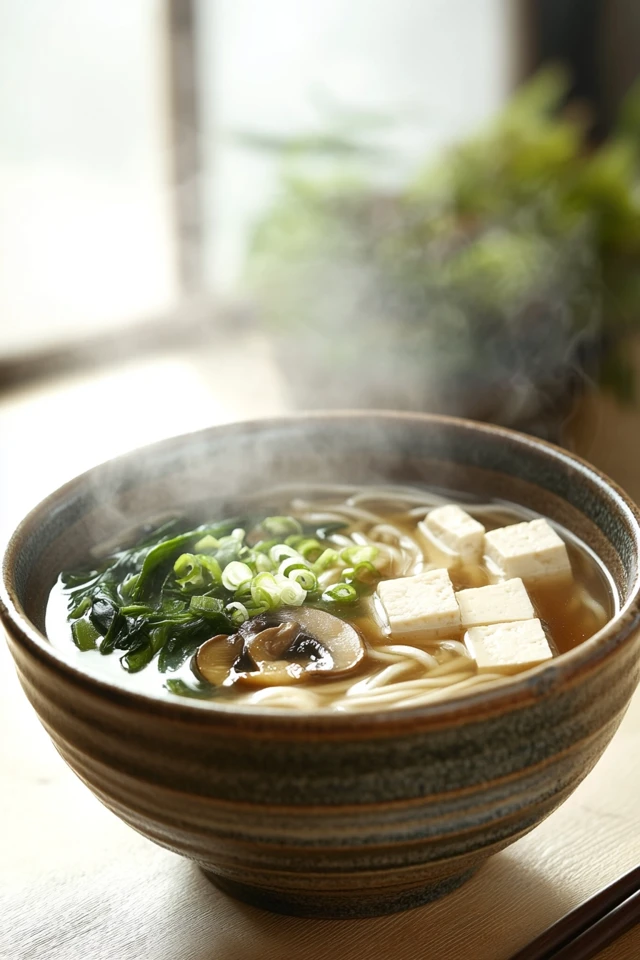
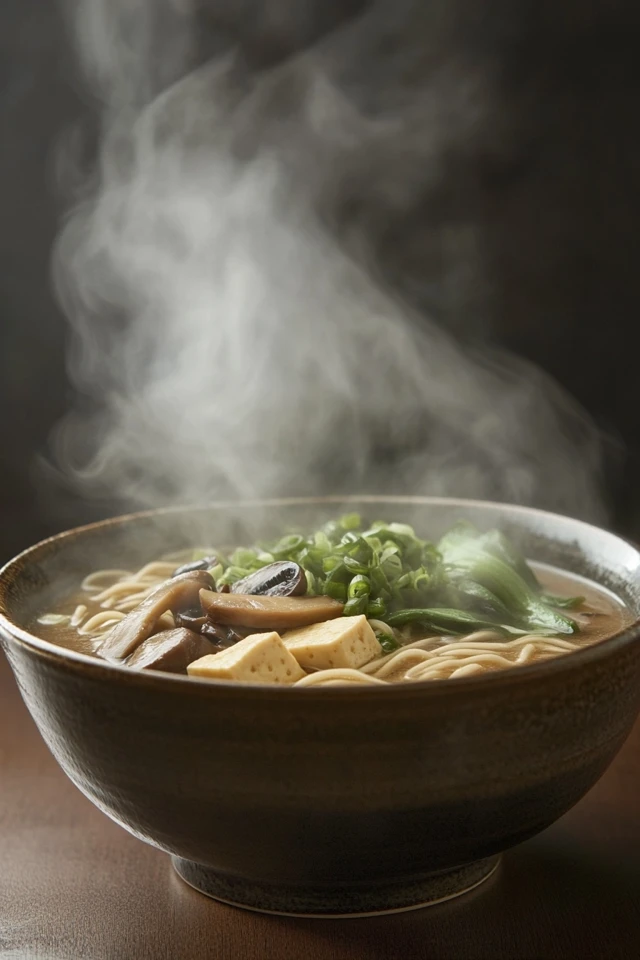
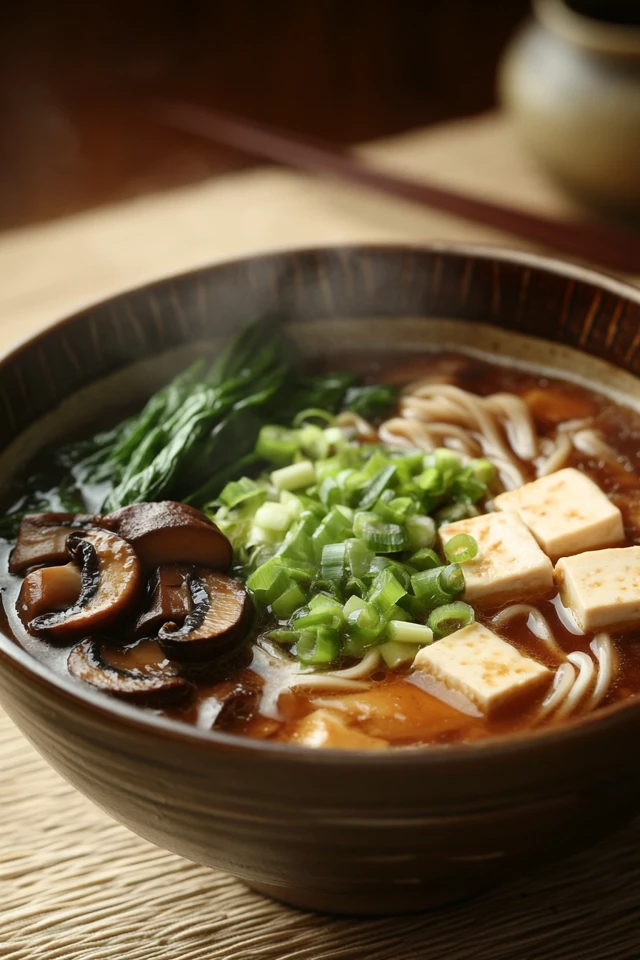
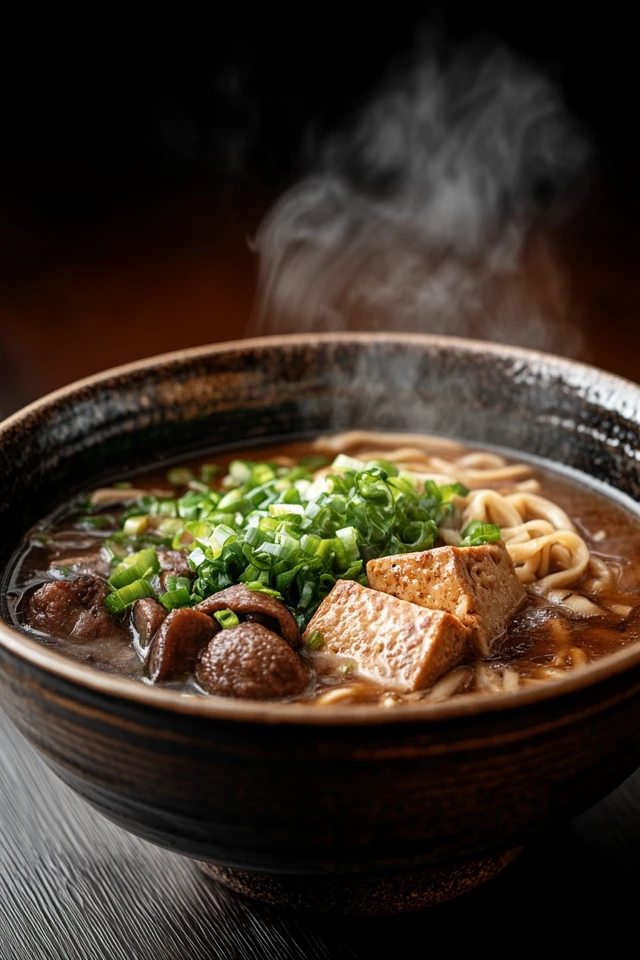

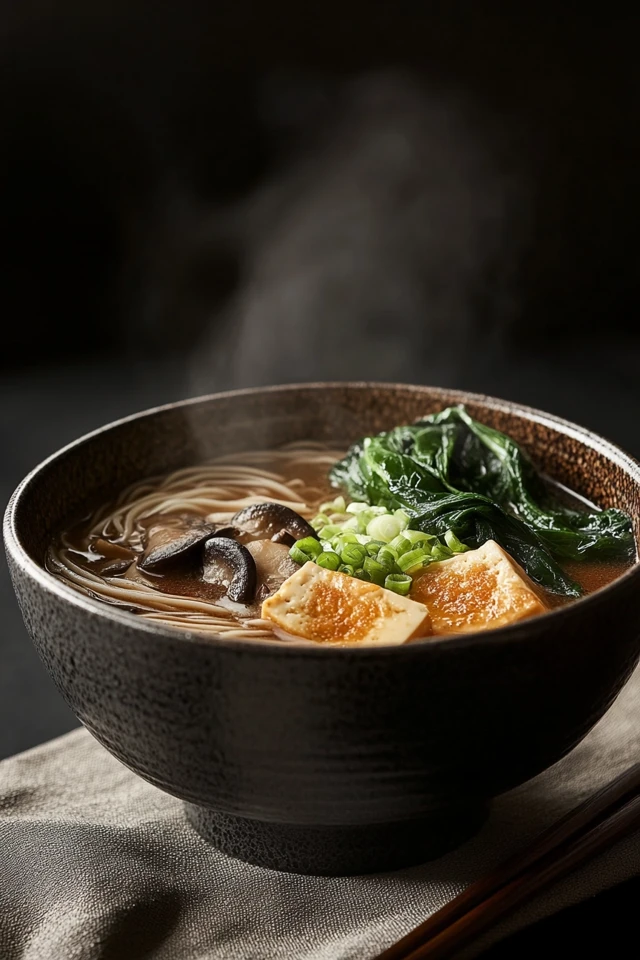
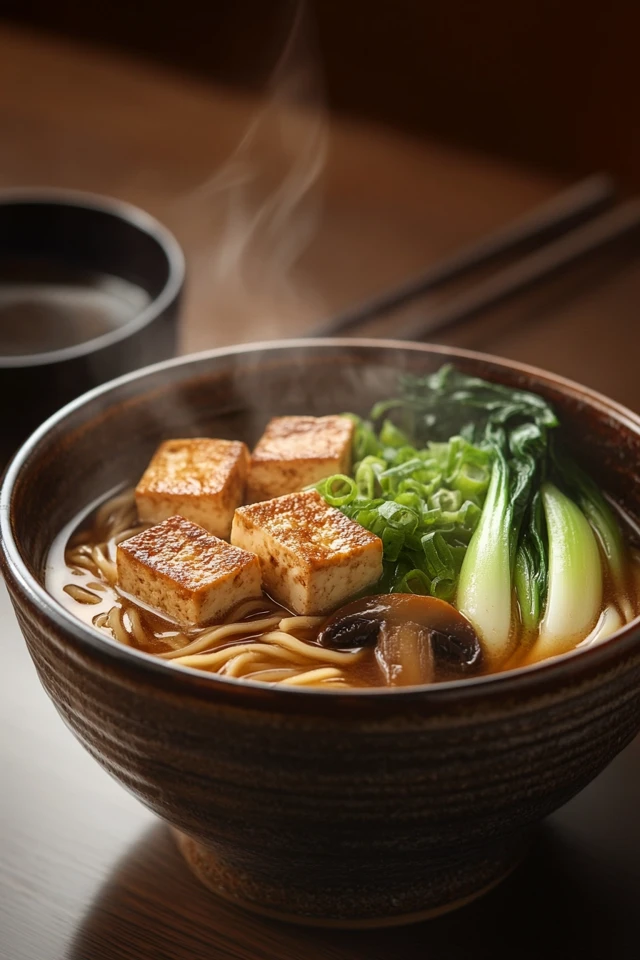
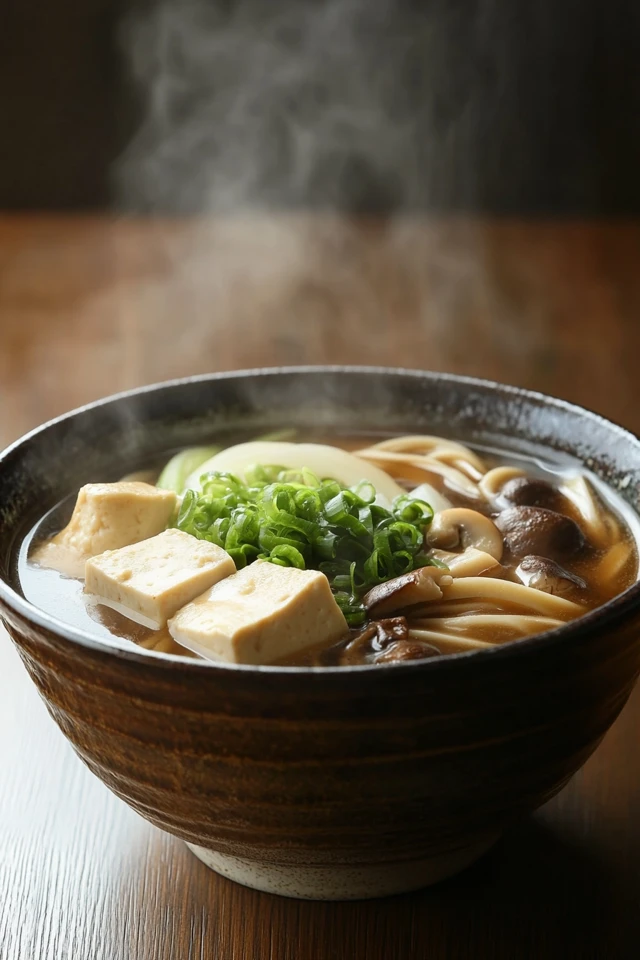
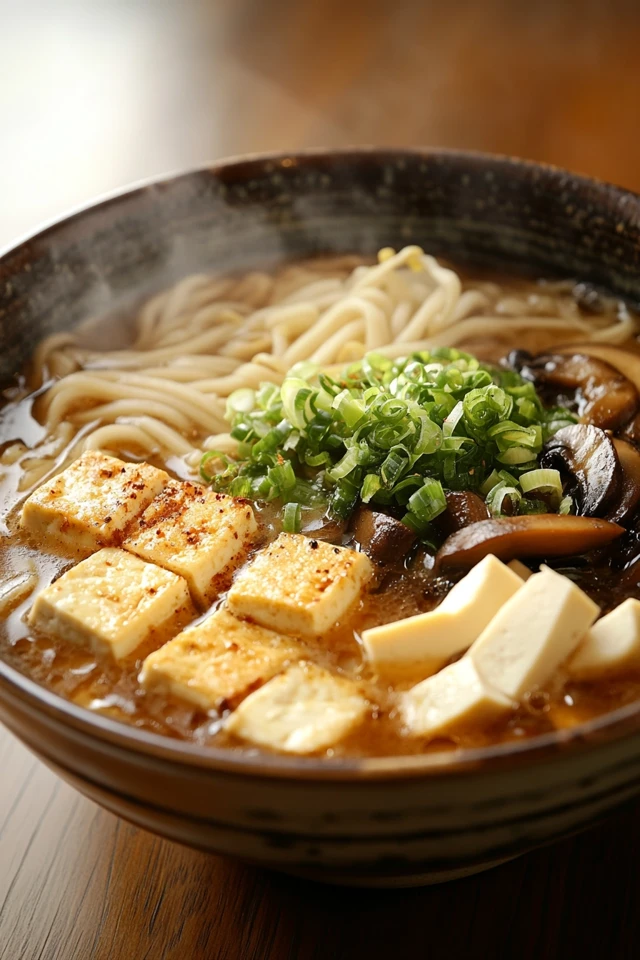
Frequently Asked Questions (FAQs)
1. Can I use different types of noodles for this recipe?
Absolutely! While soba and whole wheat noodles are excellent choices, you can substitute them with other types such as rice noodles, udon, or even ramen noodles for a more authentic texture. Adjust the cooking time based on the noodle type you choose.
2. Is this recipe gluten-free?
Yes, by using gluten-free soy sauce or tamari and ensuring that the noodles you select are gluten-free, you can make this Quick Miso Ramen with Veggies gluten-free. Always check the labels of store-bought sauces and noodles to confirm their gluten content.
3. How can I make the broth more flavorful?
To enhance the flavor of the broth, consider adding ingredients like dried seaweed (kombu or wakame), shiitake mushrooms, or a splash of mirin. These additions infuse the broth with deeper umami notes, enriching the overall taste of the ramen.
4. Can I prepare this ramen ahead of time?
Yes, you can prepare the broth and cook the tofu ahead of time. Store them separately in airtight containers in the refrigerator for up to 3 days. When ready to serve, simply reheat the broth, cook the noodles, and assemble the ramen with fresh toppings.
5. What can I substitute for miso paste?
If you don’t have miso paste, you can substitute it with a combination of soy sauce and tahini for a similar umami flavor. Alternatively, a splash of soy sauce and a teaspoon of nutritional yeast can also mimic the depth of miso.
6. How do I prevent the tofu from sticking to the pan?
Ensure that the skillet or wok is well-heated and oiled before adding the tofu. Allow the tofu to cook undisturbed for a few minutes on each side until it forms a crispy crust before flipping. This helps in preventing sticking and ensures a golden-brown exterior.
7. Can I add other vegetables to this ramen?
Absolutely! Feel free to add any vegetables you prefer or have on hand. Popular additions include sweet corn, bell peppers, zucchini, bok choy, and bean sprouts. Experiment with different veggies to keep the ramen exciting and packed with nutrients.
8. Is this recipe suitable for kids?
Yes, this Quick Miso Ramen with Veggies is kid-friendly. The mild flavors of miso and the sweet vegetables are generally well-received by children. You can adjust the spice levels by omitting or reducing sriracha to suit their taste preferences.
9. How can I make the ramen spicier?
To increase the spice level, add more sriracha or chili oil to the broth. You can also incorporate fresh sliced chilies like jalapeños or serranos for an extra kick. Adjust the amount based on your heat tolerance and preference.
10. Can I freeze this ramen?
While the broth and tofu can be frozen separately for up to 2 months, the noodles and fresh vegetables are best added fresh when serving. To freeze, store the broth and cooked tofu in airtight containers. Thaw them in the refrigerator overnight and reheat on the stovetop before assembling the ramen with freshly cooked noodles and vegetables.
About the Author
Welcome to Vegan & Plant-Based Kitchen! I’m Julio Arco, a passionate vegan chef dedicated to creating delicious, easy-to-make plant-based recipes that nourish both body and soul. Since embracing a vegan lifestyle in 2010, I’ve been on a culinary journey to explore the endless possibilities of plant-based cooking. From vibrant ramen bowls to indulgent desserts, my mission is to inspire and empower you to embrace a compassionate and healthy lifestyle through wholesome food.
Join me on this journey as we explore diverse flavors, experiment with fresh ingredients, and celebrate the beauty of plant-based living. Let’s create, share, and enjoy the goodness of vegan cooking together!
Disclaimer: This blog post is intended for informational purposes only. Always consult with a healthcare professional before making significant changes to your diet.


